Сообщение WWI Christmas truce in 1914: pictures and facts появились сначала на Old Pictures.
]]>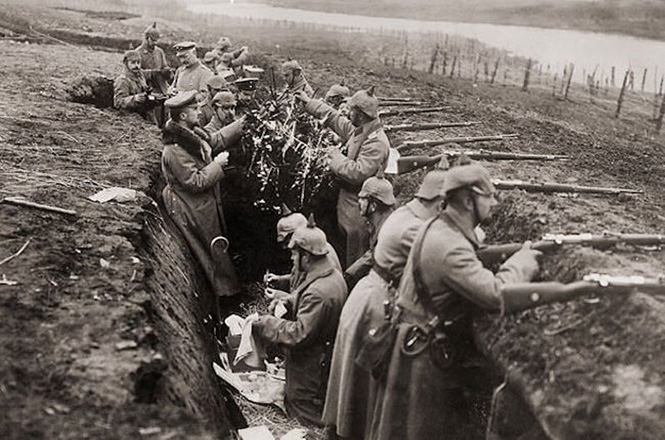 This fascinating story of the Christmas Truce of 1914 started on December 24, when the British watch noticed that the Germans were installing Christmas trees on their trenches’ parapet. Brits used to see machine guns there!
This fascinating story of the Christmas Truce of 1914 started on December 24, when the British watch noticed that the Germans were installing Christmas trees on their trenches’ parapet. Brits used to see machine guns there!
How the Christmas truce of 1914 became possible
Later reporters will call it a WWI Christmas truce of 1914. Of course, the decorations were primitive as they can be during wartime. The sparkling copper leading belts from shells decorated the Christmas trees. Garlands replaced bandages and telegraph tapes.
Read more: 100 most important pictures in history
But the fact itself did not fit in with the atmosphere of the hopeless massacre that had prevailed here for the past few months! Very soon, Brits heard the German Christmas song, Stille Nacht.
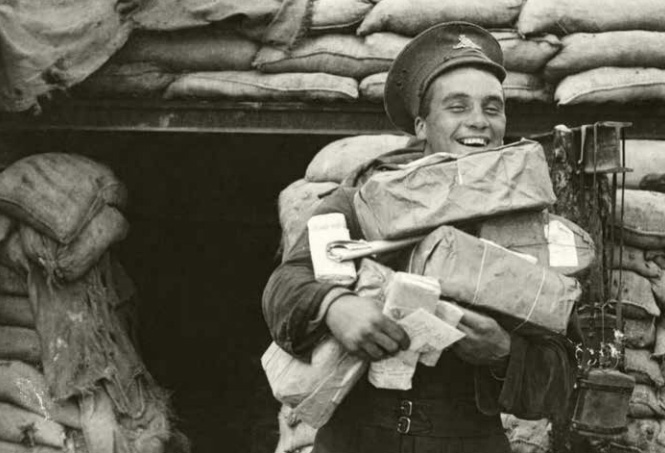
The British soldier is going to the no-man land to exchange Christmas gifts.
The shooter of the Royal Scottish Guards Graham Williams recalled that evening much later:
I was in the trench, watching the German line of defense. I was thinking about how different this holy night was from those that I had before … When suddenly lights appeared here and there near the German trenches. The light came from the candles lit on Christmas trees. The candles burned evenly and brightly in the calm and frosty evening air. Other sentries rushed to wake the sleeping people. “Look what is happening!”
And at that moment, the enemy began to chant Stille Nacht, Heilige Nacht. In fact, it was the first time I heard then this hymn, which was not so well known in our country. The Germans finished singing, and we thought we had to respond with something. And we sang the psalm First Nowell, and when we finished, there was friendly applause from the German side. They followed with another Christmas song, beloved by the Germans – O Tannenbaum. The Kaiser’s soldiers began to go out to the neutral zone with exclamations: “Merry Christmas, British!” They carried gifts in their hands instead of weapons.
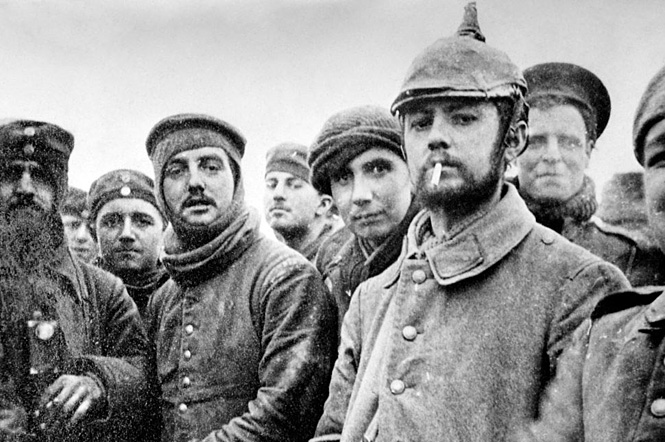
WWI Christmas truce in 1914
Here’s how the Germans and the British soldier began to go out to no man’s land to celebrate WWI Christmas truce of 1914. An English officer recalls:
I looked out of the trench and saw four German soldiers emerging from their trenches and heading in our direction. I ordered two of my men to meet the “guests”, but without weapons, since the Germans were not armed. But my guys were afraid to go, so I went alone. When the Germans approached the barbed wire, I saw that they were three privates. One of them said in English that they only want to wish us a Merry Christmas.
I asked what order the Germans received from the officers since they walked in our direction. They replied that there was no order, they went without permission. We exchanged cigarettes. When I returned to the position, the trenches were empty. I was surprised to find a crowd of 100-150 British and German soldiers. They laughed and celebrated. After a while, I noticed two German officers and through an interpreter told them that they should meet in a no man’s land and without weapons. One of the enemies admitted that he dreamed of an imminent end to the war, and I agreed with him.
Exchanging the Christmas gifts in the trenches
The soldiers of both armies received Christmas parcels from home. They could exchange small gifts: food, tobacco, various alcohol, even buttons, and hats were used. More than one hundred thousand Germans, British and French along the entire Western Front, stopped killing each other that night. Right between the lines of the trenches, the military priests performed the Christmas service.
Instead of organs of city cathedrals, soldiers sang. Former enemies together collected and buried the bodies of the killed, decomposed for months in funnels. They performed funeral services and prayers together.
In some front sectors, the truce lasted only one night, but in some places, the WWI Christmas truce of 1914 lasted a week until the New Year. It turned out that propaganda clichés are inexpensive: having started to communicate, the “Hans” and “Tommy” quickly realized that their opponents were not all the fiends from hell. Hatred disappeared, giving way to the friendliness of people in an equally bad situation.
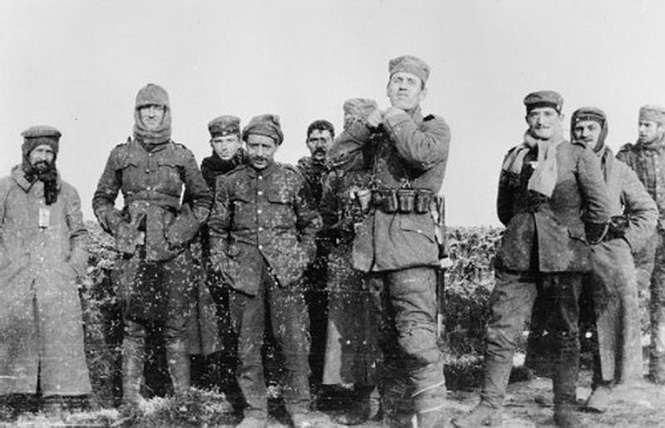
The Christmas of 1914 at Ypres
The football match during the Christmas truce
After the nightly Christmas services and the exchange of gifts, the miracles continued on the very day of Christmas. The soldiers came out of the trenches again and began to play football in the no-man land!
The bars of the gate were stakes in the ground. A stew can could serve as a ball. Each team could have an arbitrarily large number of players: no one really cared about the rules.
Ironically, the soldiers played football near Ypres’s town, which will give a name to the most deadly gas of WWI. The Yperite gas, or the Mustard gas, was dangerous because no WWI gas mask could stop it.
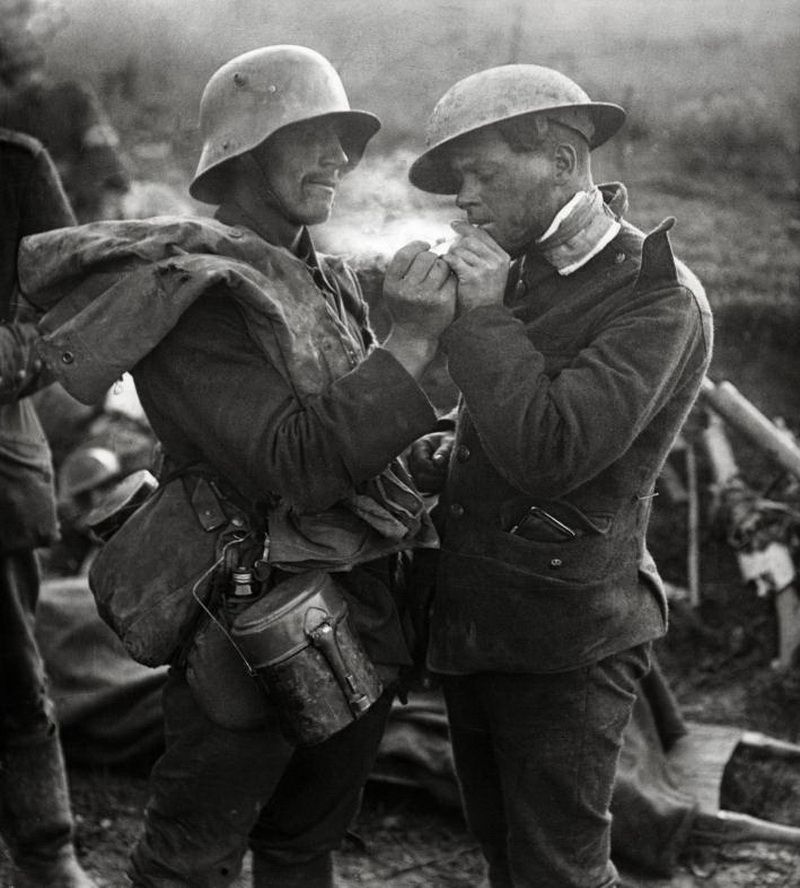
German and British soldier during the Truce
The punishment
When information about the soldier’s willfulness reached the authorities, the reaction on the WWI Christmas truce of 1914 was immediate. The guilty were punished, and the fire began. The commander of the British II Corps, General Horatio Smith-Dorren, issued an order prohibiting any communication with the enemy. The commander of the Scottish Guards, Sir Ian Calhoun, was nearly shot for “aiding the enemy.” Only the personal intervention of King George V saved an officer. The King considered it unethical to shoot a knight and a relative of his prime minister.
By the way, some germans expressed dissatisfaction with the “outrageous” fact of fraternization with the enemy. The little known corporal from the 16th Bavarian Reserve Infantry Regiment was the one among them. Corporal’s name was Adolf Hitler.
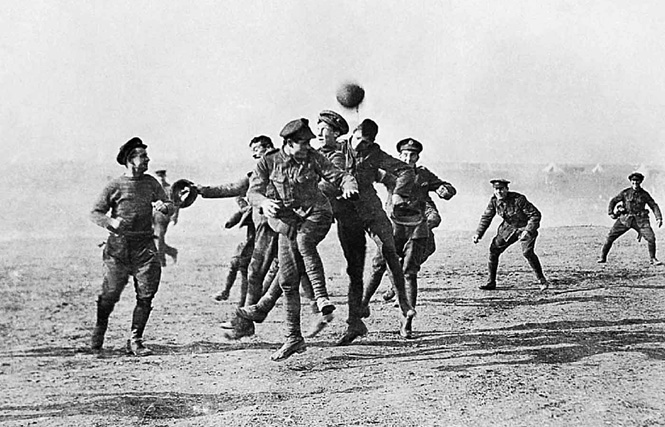
Soldiers playing football during WWI Christmas truce in 1914
They tried to hide the Truce.
For almost a week, governments and military censorship managed to hide information about the unauthorized Christmas truce in 1914. But still, the truth soon surfaced: the New York Times reported on an unusual event, and in early January, the British Daily Mirror and Daily Sketch reprinted American photographs.
Governments tried to suppress any attempts to reconcile the soldiers on major Christian holidays in advance. Since 1915, the British artillerymen were ordered to increase the intensity of German positions on the eve of Easter and Christmas.
Commandant reshuffled units in different sectors of the front in order to prevent the establishment of any comradely ties with the Germans. There was no more such a Christmas truce as it was in 1914.
Сообщение WWI Christmas truce in 1914: pictures and facts появились сначала на Old Pictures.
]]>Сообщение Nine European kings in one photo, May 1910 появились сначала на Old Pictures.
]]>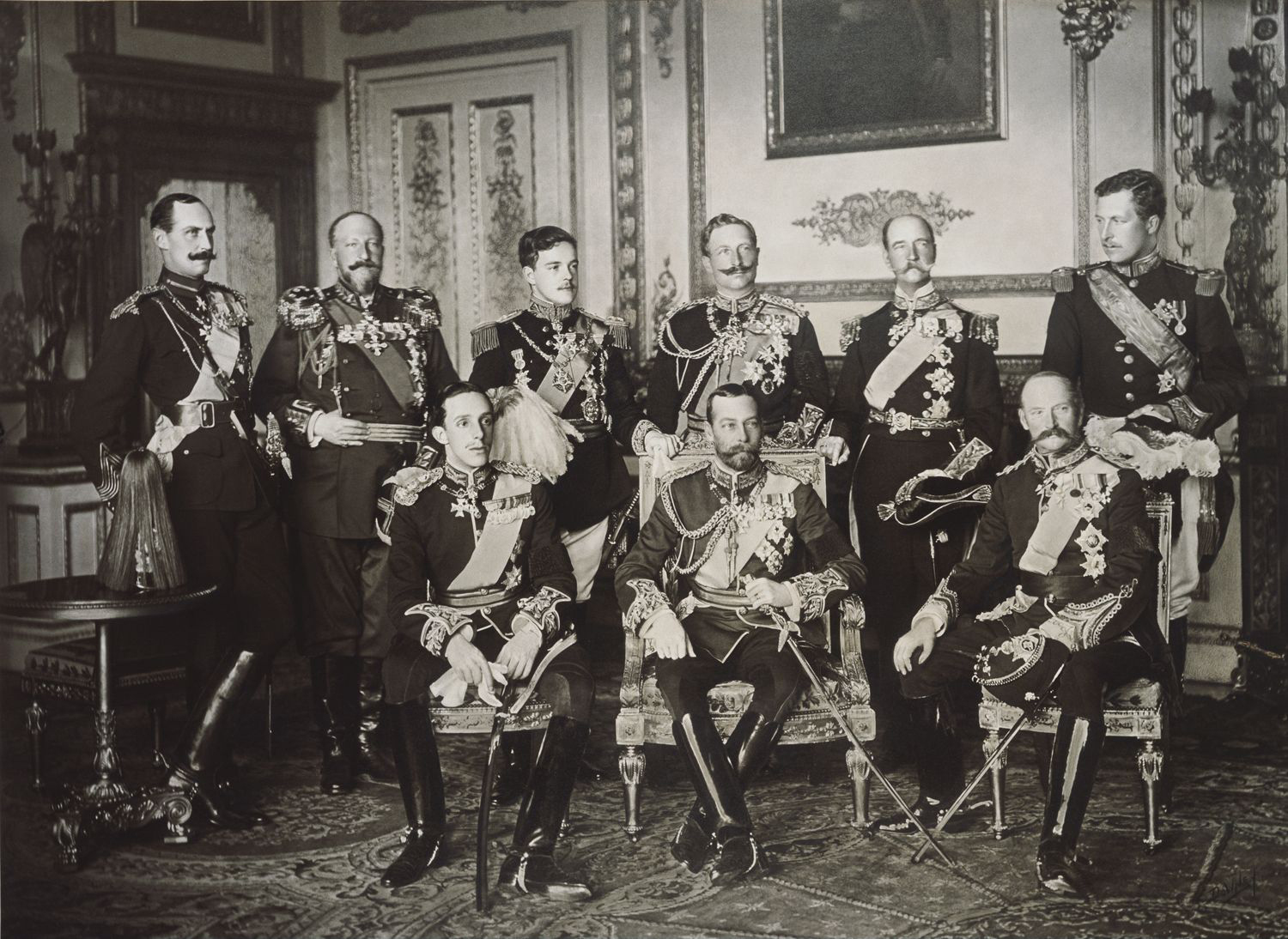 Ironically, these nine kings will be at war (WWI) less than five years after this photo was taken.
Ironically, these nine kings will be at war (WWI) less than five years after this photo was taken.
Nonetheless, there was no high tension between monarchs on May 20, 1910. On this day, masters of the W&D Downey photo studio took this historical image of Nine European Kings at Windsor Castle.
They never gathered together before this day.
Standing: King Haakon VII of Norway, King Ferdinand I of Bulgaria, King Manuel II of Portugal, German Emperor and King of Prussia Wilhelm II, King George I of Greece, and King Albert I of Belgium.
Sitting: King of Spain Alfonso XIII, King of Great Britain and Ireland, George V, and King of Denmark Frederick VIII.
Nine Royal relatives in a photo
There was a reason for all these nine kings to pose for a single photo. All of them were connected with family bonds. For example, Frederik VIII of Denmark (sitting, far right) was a daddy of Haakon VII of Norway (top left). The German ruler Wilhelm II of Germany (top, 3rd from the right) was a cousin of both George V of the United Kingdom (bottom center) and Queen Maud of Norway, who was wife to Haakon VII of Norway and sister to George V of the United Kingdom. Let’s not forget that Haakon VII of Norway and George V of the United Kingdom were brothers-in-law. George V of the UK and Queen Maud of Norway’s mother was incidentally Alexandra of Denmark, sister to Frederik VIII of Denmark. Here’s how Frederik VIII of Denmark was also the uncle of George V of the United Kingdom.
Read more: US WWI propaganda posters.
Again, George was a grandson of Queen Victoria and Prince Albert and the first cousin of Russian King Nicholas II of Russia and Kaiser Wilhelm II of Germany. By the way, Nicholas II also could be present in this photo, but he didn’t manage to come in time.
What will happen to the Nine Kings after this photo
All these elegant and brilliant representatives of their dynasties came together to send off the last journey of the English king Edward VII. They do not yet know what awaits them in the very near future.
The revolutions and social transformations will remove four of nine of these monarchs. One of them will be killed (George I of Greece was shot in March 1913 in Thessaloniki).
In less than five years, Britain and Belgium will fight side by side against Germany and Bulgaria in WWI. Peter of Serbia (another king missing in this photo of the nine) will fight on King George’s side.
Only five of these nine monarchies will survive Norwegian, Spanish, English, Danish, and Belgian.
Read more: Adolf Hitler during WWI: historical facts and pictures
Сообщение Nine European kings in one photo, May 1910 появились сначала на Old Pictures.
]]>Сообщение German WWI submarine UB122 that spent 92 years underwater появились сначала на Old Pictures.
]]>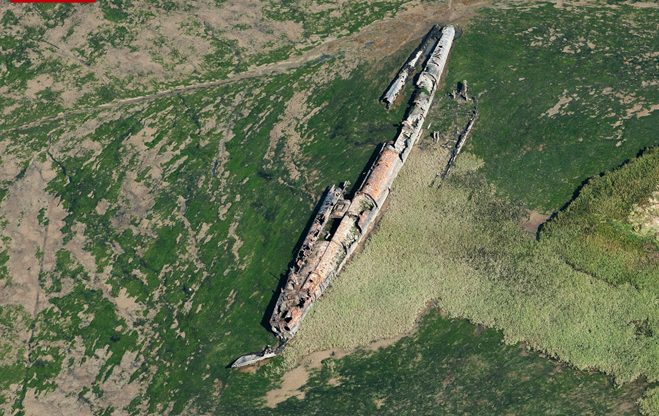 This decrepit german WWI submarine appeared on the surface 92 years after the last dive. We guess that if this U-boat UB122 were looking for a new job, its resume would have been extremely short. It left the shipyard of the Bremen in February 1918. And its career was over in November of the same year, with no combat record.
This decrepit german WWI submarine appeared on the surface 92 years after the last dive. We guess that if this U-boat UB122 were looking for a new job, its resume would have been extremely short. It left the shipyard of the Bremen in February 1918. And its career was over in November of the same year, with no combat record.
Another German submarine trophy
The end of the story of this German WWI submarine wasn’t heroic in any way. The vessel, which never fired any of its ten torpedoes, was handed over to the British, who decided to melt it down. However, upon entering the Thames estuary, the towing ropes collapsed, and the submarine suddenly sailed away. The escape ended at the swampy coast of Kent.
And yes, we remember that this German WWI submarine ended its days just like UB122, but at a different British shore.
It’s time to go up!
The history of this submarine surfaced at the end of 2013. Strong December tides pulled the boat closer to the shore.
Historians identified the submarine only after its inspection. According to archival records, in total, six German submarines were lost during the towing! Three of them – U122, U123, and UB122 – all this time were hiding somewhere in the local shallows.
Three British and 41 German boats sunk during WWI around this British coastal area.
Read more: Torpedo sticks out of a Soviet submarine, 1989
WWI is usually called the ‘first modern war’ – and the naval war. Many technologies were used for the first time. U-boat tech was one of them. Effective submarine combat was an especially new aspect of war. Germany concentrated on U-Boat production to fight the greater British flotilla and put pressure on its Atlantic units. German submarines had a massive surprise effect during the first years of WWI.
Сообщение German WWI submarine UB122 that spent 92 years underwater появились сначала на Old Pictures.
]]>Сообщение Photo of the iceberg that sank the Titanic появились сначала на Old Pictures.
]]>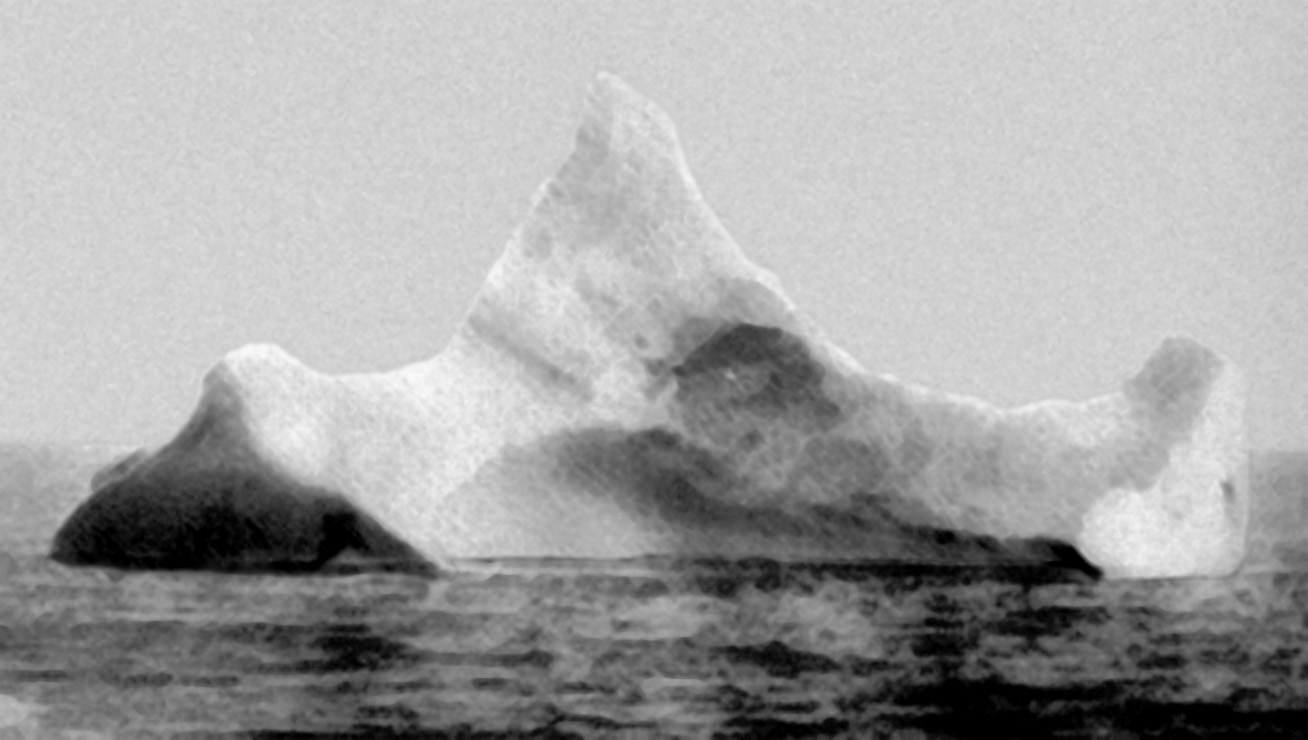 To be precise, here we have two pictures of the iceberg that sank the Titanic. Those are two different icebergs; both of them could do that last icy touch.
To be precise, here we have two pictures of the iceberg that sank the Titanic. Those are two different icebergs; both of them could do that last icy touch.
When tragedy occurs, we strive to find someone to blame. Human psychology is difficult and scary for us to accept that sometimes catastrophes and tragedies happen just like that, without anyone’s malicious intent. And it will not be possible to punish the culprit because he is not.
And there is no doubt that the Titanic sinking was one of the most massive disasters of its time. On the night of April 14-15, 1912, 1635 people died in the Atlantic’s cold waters. It’s easier to count the survivors: 712 people. Here’re some pictures of those lucky ones.
Who’s guilty in sinking the Titanic?
The wreck of the most magnificent and “safest” ship in the world was a shock! Everyone rushed to find the guilty. The main suspect was an iceberg photographed on April 15, 1912, from the Prince Albert cruiser.
The crew of the cruiser did not yet know about the tragedy of the Titanic. They noted the size of the iceberg. Also, they noticed a suspicious brown paint on the side of the ice giant. It looked like this icy mass just crashed into something… Here’s why people believe that it was the iceberg that sank the Titanic.
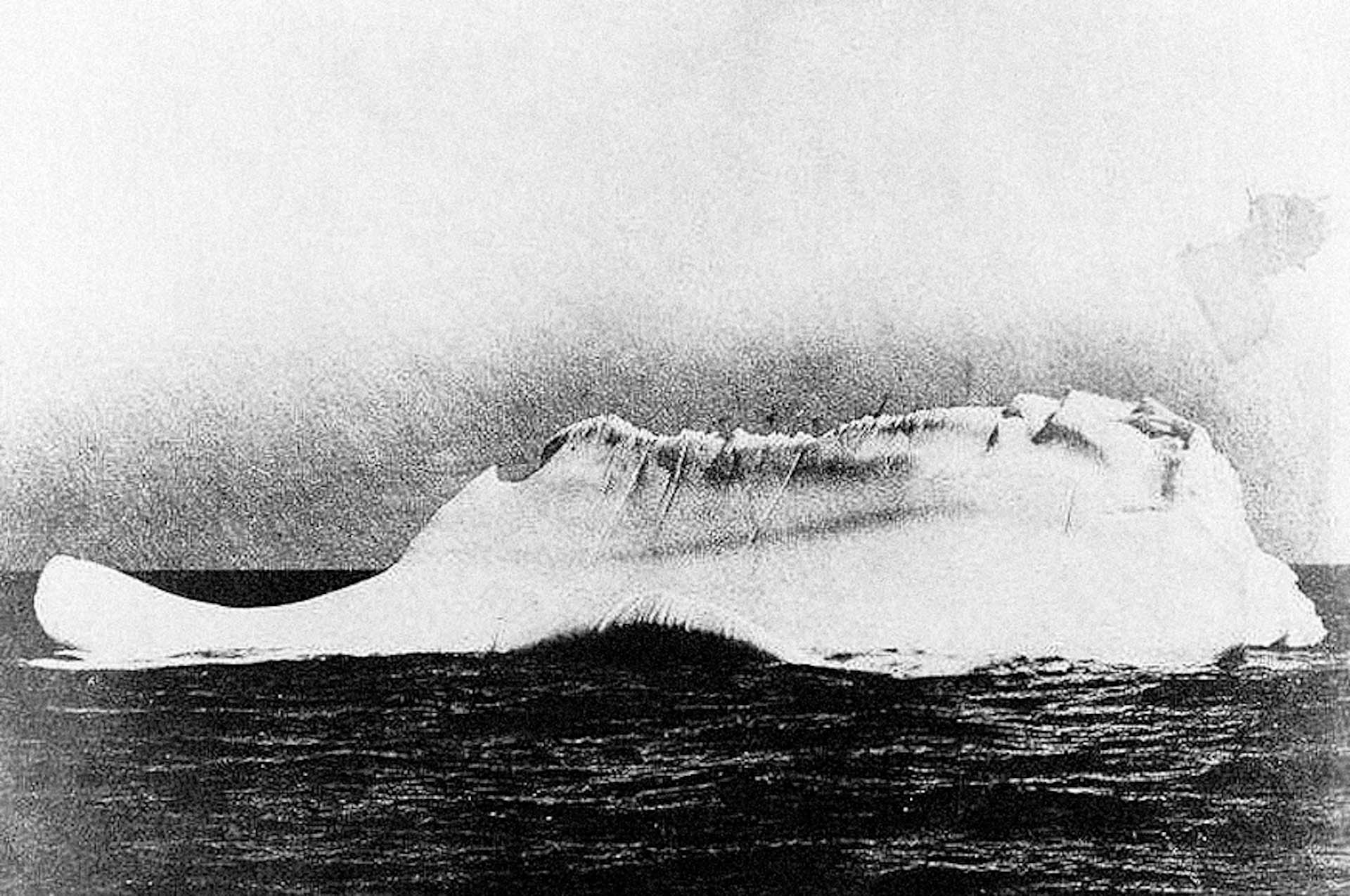
Another iceberg that could sink titanic. This photo was taken a week after the disaster.
And another suspicious iceberg.
Meanwhile, the cable-laying machine Miniya was floating in the same area of the Atlantic a week later. This vessel was directed to the wreck site aiming to collect some victims’ bodies. The Miniya’s crew captured a picture of a large iceberg drifting nearby. This one was also huge, and it also looked suspicious. Maybe it was the same iceberg that somewhat melted after a week. But in this picture, the ice paint is also viable.
Сообщение Photo of the iceberg that sank the Titanic появились сначала на Old Pictures.
]]>Сообщение Endurance: Shackleton’s incredible voyage in pictures появились сначала на Old Pictures.
]]>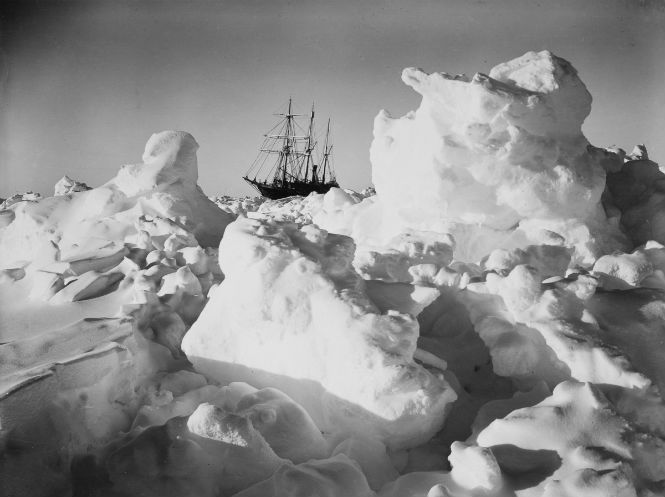 Shackleton’s voyage on Endurance was not so incredible. In fact, it failed. But at the same time, it was one of the last expeditions of the golden age of polar discoveries. And it went down in history as an example of courage and professionalism.
Shackleton’s voyage on Endurance was not so incredible. In fact, it failed. But at the same time, it was one of the last expeditions of the golden age of polar discoveries. And it went down in history as an example of courage and professionalism.
How Shackleton started his voyage on Endurance
Exploration of the Antarctic is a troublesome business even now. It required inhuman endurance, good health, and luck.
The first thing you need is a ship. Then you’ll need a team. Shackleton advertised his voyage in English newspapers: “People are needed to participate in a risky journey. Small salary, piercing cold, long months of complete darkness, constant danger, a safe return doubtful. In case of success – honor, and recognition. Sir Ernest Shackleton.”
That was an excellent beginning of Shackleton’s incredible voyage on Endurance. The number of applications exceeded five thousand, and there were also ones from women. As a result, the captain formed two teams, 28 people each.
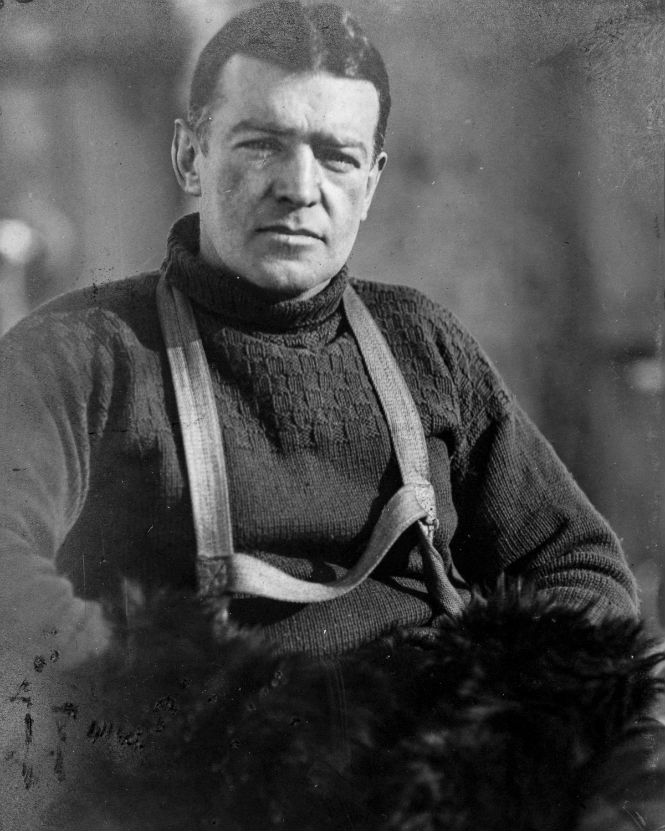
Sir Ernest Shackleton, Captain, Explorer, and Gentleman.
The great expectations
It was an Imperial Transantarctic expedition. Shackleton chose this name because Roald Amundsen had already reached the South Pole a few years earlier. Here’s why noble explorer cherished an even more ambitious plan – to cross Antarctica. Explorer had to cover about 2,900 kilometers on ice.
The expedition consisted of two ships: Endurance and Aurora. The Endurance was the main ship. The Aurora had a support mission: it had to leave stocks of food for the returning trip. But something went wrong.
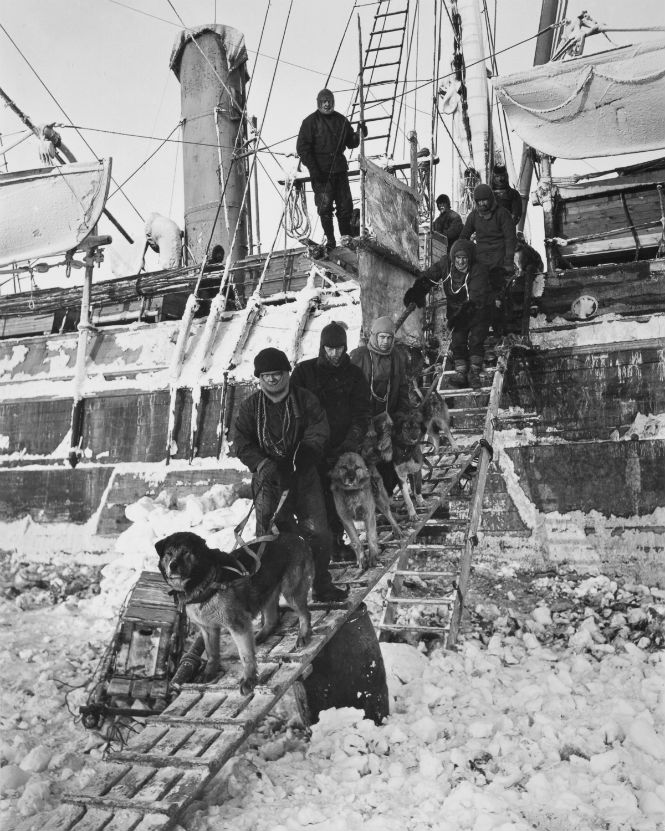
Endurance team with sled dogs, the beginning of the incredible voyage.
Unexpected ice
The expedition began on August 8, 1914. The Endurance planned to reach the Weddell Sea coast, spend the winter in Fasel Bay, and sail to the South Pole next Antarctic summer. Six people and 69 dogs in four motorized sleds were about to cross the continent and reach the Ross Sea. Food depots left by the Aurora were to await them there. The second ship had to pick up the expedition near Beardmore Glacier.
However, already in early December, the Endurance encountered unexpectedly dense ice. The frozen ship drifted north for four months. On February 24, Shackleton ordered the crew to prepare for wintering on the ice. The sled dogs occupied the special kennels, and the team entertained themselves by playing all kinds of games and competitions. Moonlight skiing was mandatory, and explorers played amateur performances.
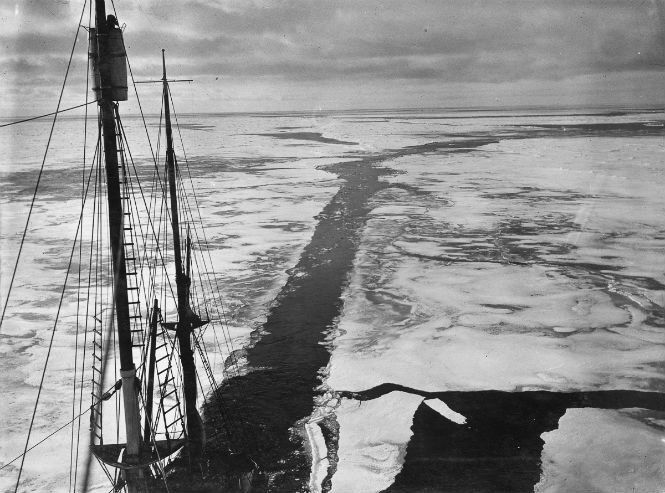
The Endurance blazes a trail in the ice of the Waddell Sea.
Photographer Frank Hurley captured a number of impressive landscapes and crew shots during the ship’s forced anchorage. Then the captain still believed that they would wait until summer and try to reach the Gulf of Fasel again. But there was a high risk that the icy masses will crush the ship meanwhile. By the middle of autumn, it was obvious that the Endurance ship was counting its last days of the Shackleton’s incredible voyage.
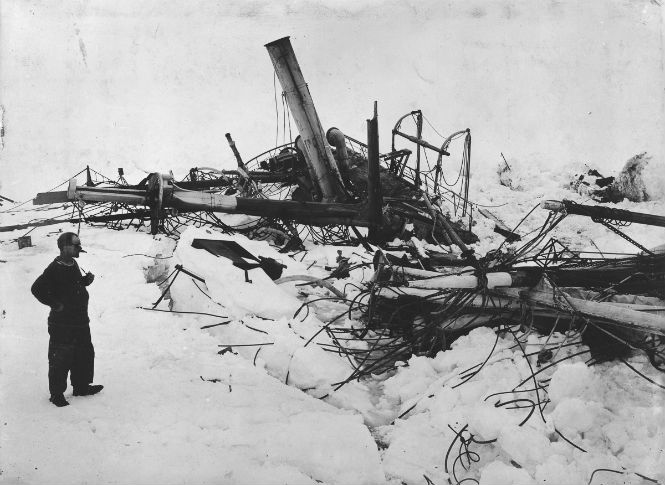
Frank Wilde at the Endurance shipwreck
The Endurance crash
On October 27, 1915, Shackleton ordered the team to leave the ship. Endurance was compressed by ice; its voyage was over. Meanwhile, food supplies were running low, and the captain had to shoot the carpenter’s cat and sled dog puppies personally.
The trip was very difficult since the ice looked like an endless labyrinth of shafts and hummocks, almost impossible to move along. Therefore, the crew camped on the ice, named Patience, and the ship sank on November 27. There was no longer any question of continuing the operation. Shackleton’s incredible voyage of Endurance transformed into incredible survival.
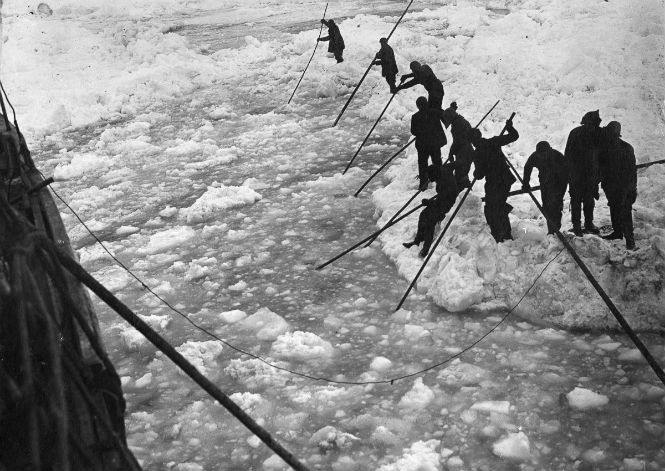
The ship’s crew clears the ice from the Endurance.
On April 8, the ice floe with encampment cracked. The tents and food supplies remained on a smaller part of it, and it was about to collapse. On April 9, people embarked on boats and went through a labyrinth of ice and open water sections to Elephant Island. This island was inhabited only by seals and penguins, but the team had no other choice.
Thirty degrees below zero, lack of food (they had already eaten 69 sled dogs) made it impossible to travel long distances.
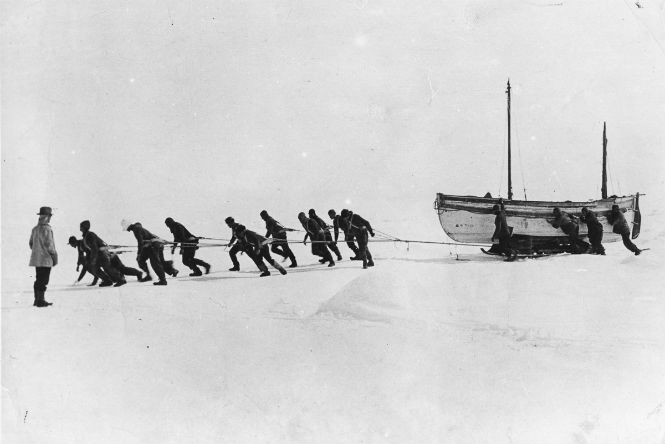
The team pulls the dinghy on the sleigh during the transition.
The final part of the Shackleton’s incredible voyage, without Endurance.
The nearest inhabited land was South Georgia, and it was 1,480 kilometers away. On April 24, 1916, Shackleton ordered one of the boats to sail. He selected five teammates and embarked on a perilous journey for help. The remaining crew members had wait for the return of their friends.
Shackleton’s team was battling hurricane winds and storm surges for 14 days. A small boat wasn’t designed for such a voyage. It constantly strove to capsize under the weight of the frozen ice. Nonetheless, they reached South Georgia. Well, it was the most incredible part of Shackleton’s voyage, without Endurance, though.
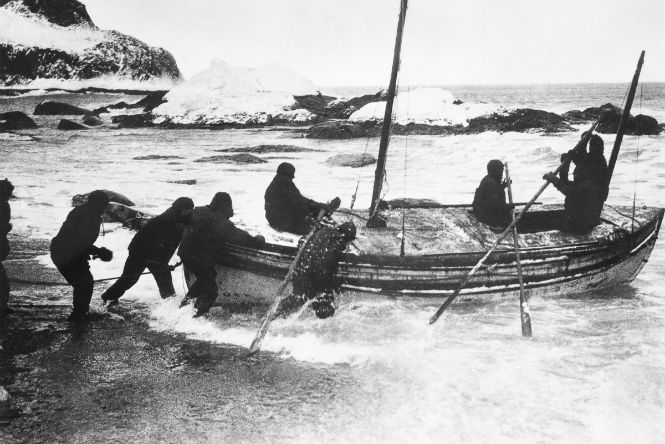
Shackleton and four crew members set off for South Georgia.
Finally, they took a 36-hour marathon across the island to reach the settlements. The trip was also very difficult because the travelers did not have maps and constantly had to bypass glaciers and mountain cliffs.
On May 20, Shackleton and his two companions reached civilization. It took another three months to rescue the crew that remained on Elephant Island, but whalers picked up all the people.
Сообщение Endurance: Shackleton’s incredible voyage in pictures появились сначала на Old Pictures.
]]>Сообщение WWI German submarine on the beach появились сначала на Old Pictures.
]]>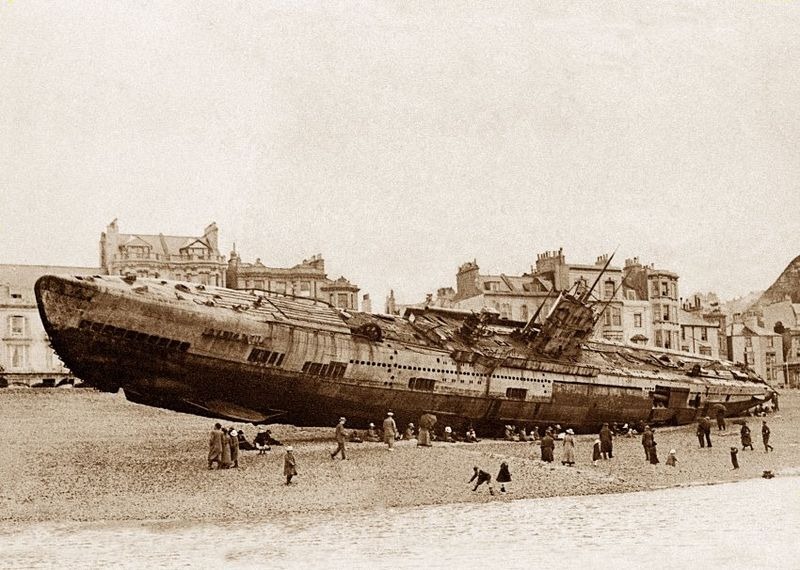 The German submarine SM U-118 barely participated in WWI. It touched the Baltic waters in February 1918 and had a short but bright life. This German submarine managed to make one effective appearance during WWI’s sea battles and sink two ships of the Entente.
The German submarine SM U-118 barely participated in WWI. It touched the Baltic waters in February 1918 and had a short but bright life. This German submarine managed to make one effective appearance during WWI’s sea battles and sink two ships of the Entente.
After the end of the war, France took control over the SM U-118. Nonetheless, U-boat didn’t reach the French shore. While a French ship was towing it, the cable broke, and the boat was carried to the beach near the British resort of Hastings.
Read more: Ernest Hemingway recuperating after his injury during WWI.
As you may guess, the WWI German submarine’s appearance on the beach of a small brit town was a major event for locals. So the boat became the main city attraction. The local authorities even organized paid excursions inside the sunbathing submarine. Army engineers dismantled U-boat only in 192. But the residents of Hastings still store various parts of the SM U-118 in their houses. Well, some submarines, like this Soviet one, live a really bizarre life.
The crucial role of the German submarines in WWI
Submarines were the deadliest weapon in the Germans’ hands. Their submarine was much more advanced than the ones used by Entente forces. The typical U-boat was 214 feet long, carried 35 men and 12 torpedoes. It could stay underwater for two hours, but its speed and maneuvering were limited. Those submarines caused significant damage to British and French fleets during the first period of WWI.
In May 1915, several New York newspapers distributed a notice by the Germany officials. It literally warned Americans not to travel to the UK as it was under the blockade. Interestingly, the statement shared the same newspaper page with an advertisement for the British-owned Lusitania ocean liner’s coming voyage from New York to Liverpool. On May 7, the WWI German submarine sank the Lusitania near Ireland. Of the 1,959 passengers, 1,198 were killed, including 128 Americans.
Сообщение WWI German submarine on the beach появились сначала на Old Pictures.
]]>Сообщение Workers on the cables of the Brooklyn Bridge, October 1914 появились сначала на Old Pictures.
]]>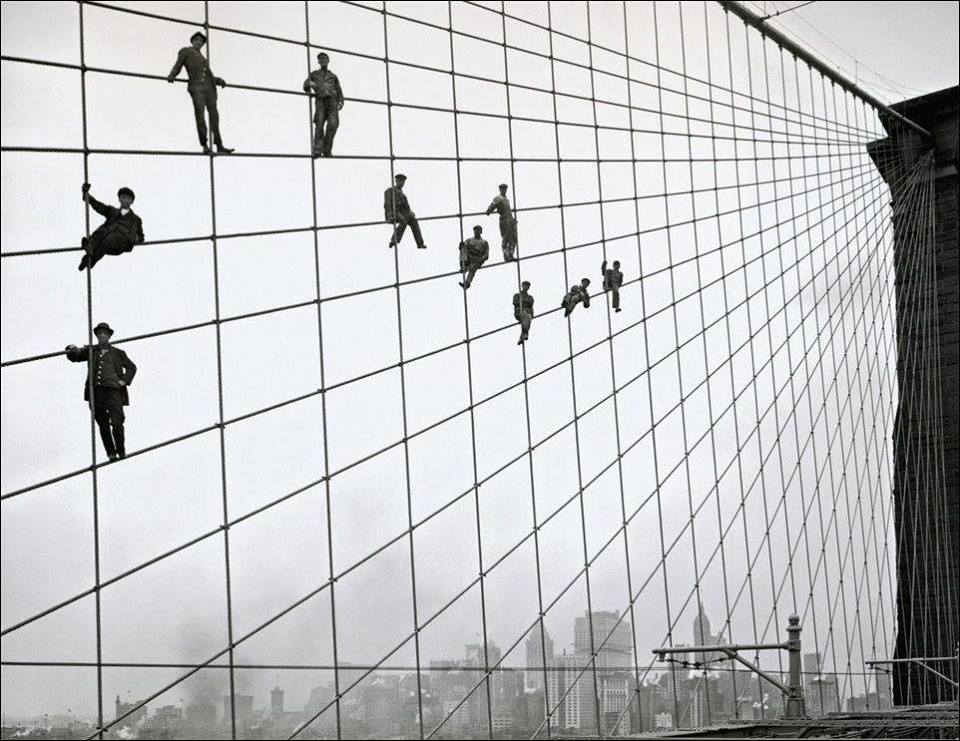
Few people know that about 150 workers died during its construction of the Brooklyn Bridge. But not the lucky ones in this famous picture. These workers demonstrate the hardness and durability of steel cables that were used to build the Brooklyn Bridge.
World-best engineering
The modern viewer may not find anything particular or exciting in the Brooklyn Bridge. But things were different at the end of the 19th century when the Brooklyn Bridge was just being erected. It was a real architectural and engineering gem. Its construction lasted 13 years, from 1870 to 1883. The Brooklyn Bridge became the largest suspension bridge in the world. It also became the first bridge to use steel cables. The Brooklyn Bridge is the classic object of the Gilded Age of New York City.
At the time it was built, the span across the East River connecting Brooklyn with Manhattan was the longest suspension bridge in the world – 5,989 feet (1.825km) in length and soars 119 feet (36.27m) above the river. The Brooklyn Bridge was opened for use on May 24, 1883.
A tragic history behind
The history of the construction of the bridge is closely related to the history of the Röbling family of engineers. We would even call this connection fatal, and we use this word in exceptional cases. So, 61-year-old engineer John Röbling was the first to sign up for the construction of the bridge. It was he who came up with the idea of placing two coastal spans and a suspended part on two massive supports 80 meters high.
The boat that John operated collided with a ferry. The engineer’s leg was smashed, doctors had to amputate fingers. Soon he died of tetanus. Nonetheless, Röbling entrusts the construction to his son Washington, who was also an engineer. But a sad fate awaited Washington too…
Washington Röbling suffered the decompression sickness, which led to paralyzation. Here’s why his wife Emily Röbling had to manage workers during 13 of the construction of the Brooklyn Bridge.
Workers hanging on the cables
Now let’s turn directly to the photograph of the workers on the cables of the Brooklyn Bridge. The picture was taken on October 7, 1914, by Eugene de Salignac. He was the official photographer of the New York Department of Bridges and Factories. Actually, Eugene was not going to become a photographer. At the age of 42, he lost his job and happily accepted the offer of a photographer friend. Here’s how Eugene became a deputy photographer in the department.
Three years later, his friend passed away, and Eugene took his place. His professional duties included visiting construction sites and renovations in New York to immortalize them for the archives and the press.
The workers were painting the cables of Brooklyn Bridge when Eugene came to take some photos. Photo, to this day, is considered a classic of the black and white genre of the early 20th century. Photography experts put it in textbooks as an example of a perfect composition.
Сообщение Workers on the cables of the Brooklyn Bridge, October 1914 появились сначала на Old Pictures.
]]>Сообщение Adolf Hitler during WW1: historical facts and pictures появились сначала на Old Pictures.
]]>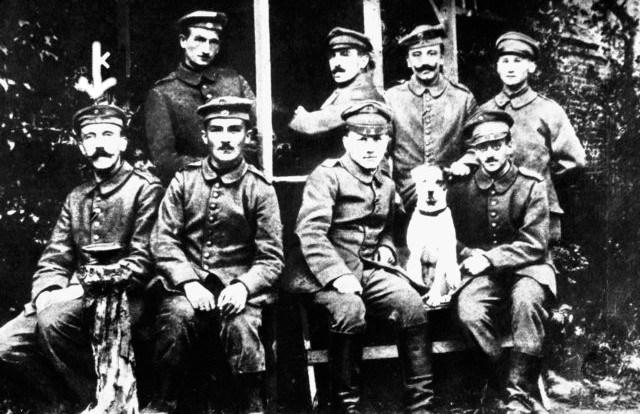 We all know Adolf Hitler for the horrors of the holocaust and the terrifying destruction of WWII. But here’s an interesting one: Hitler started to build his courageous reputation during WW1. He served in the German army from the first weeks of the war, earned some honor and invaluable life experience that influenced his future. Noteworthy, that all significant leaders of that period didn’t dodge the military service. Young Winston Churchill participated in the bloody campaign in South Africa; Joseph Stalin commanded a large number of troops during the Civil War in Russia.
We all know Adolf Hitler for the horrors of the holocaust and the terrifying destruction of WWII. But here’s an interesting one: Hitler started to build his courageous reputation during WW1. He served in the German army from the first weeks of the war, earned some honor and invaluable life experience that influenced his future. Noteworthy, that all significant leaders of that period didn’t dodge the military service. Young Winston Churchill participated in the bloody campaign in South Africa; Joseph Stalin commanded a large number of troops during the Civil War in Russia.
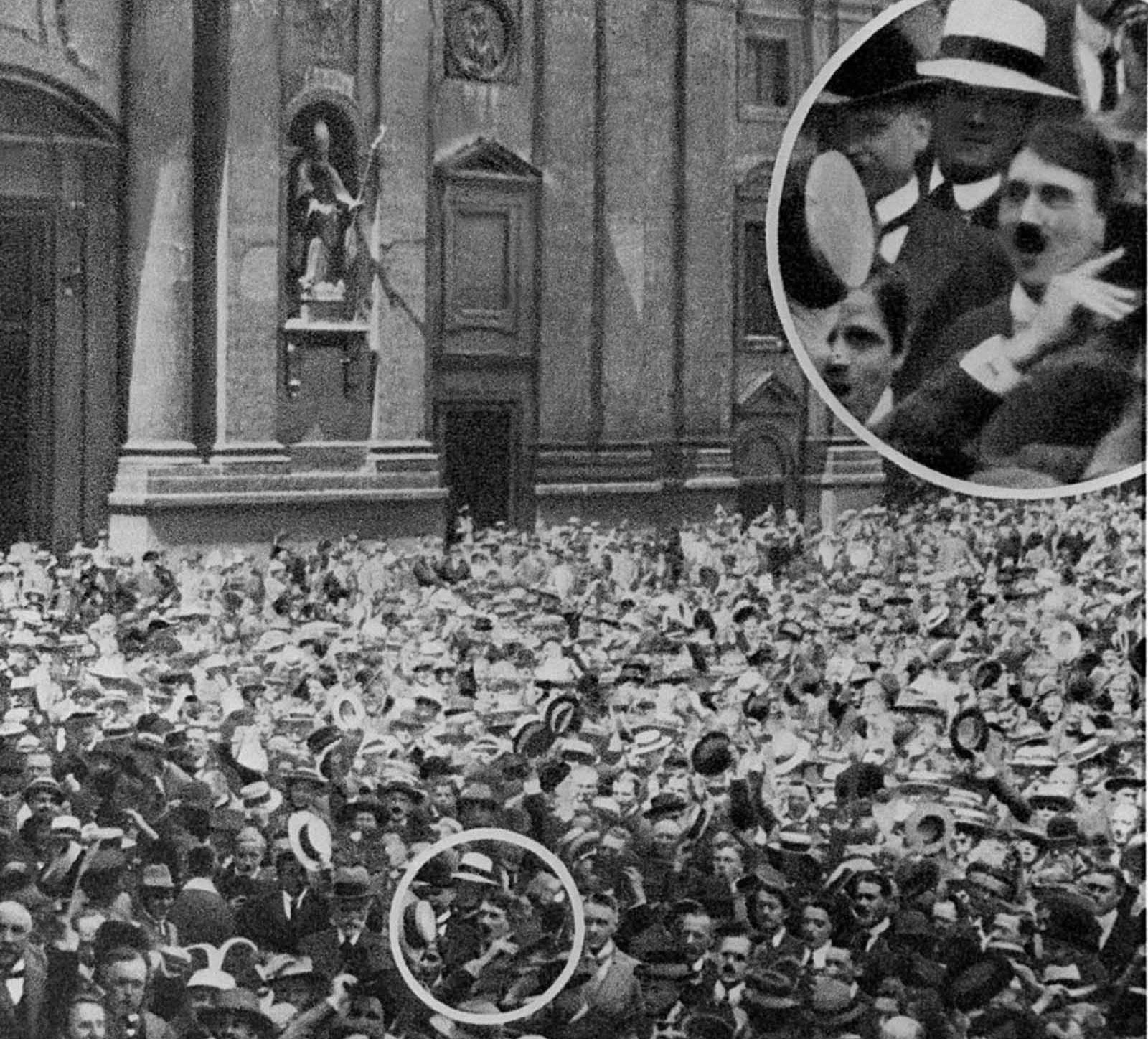
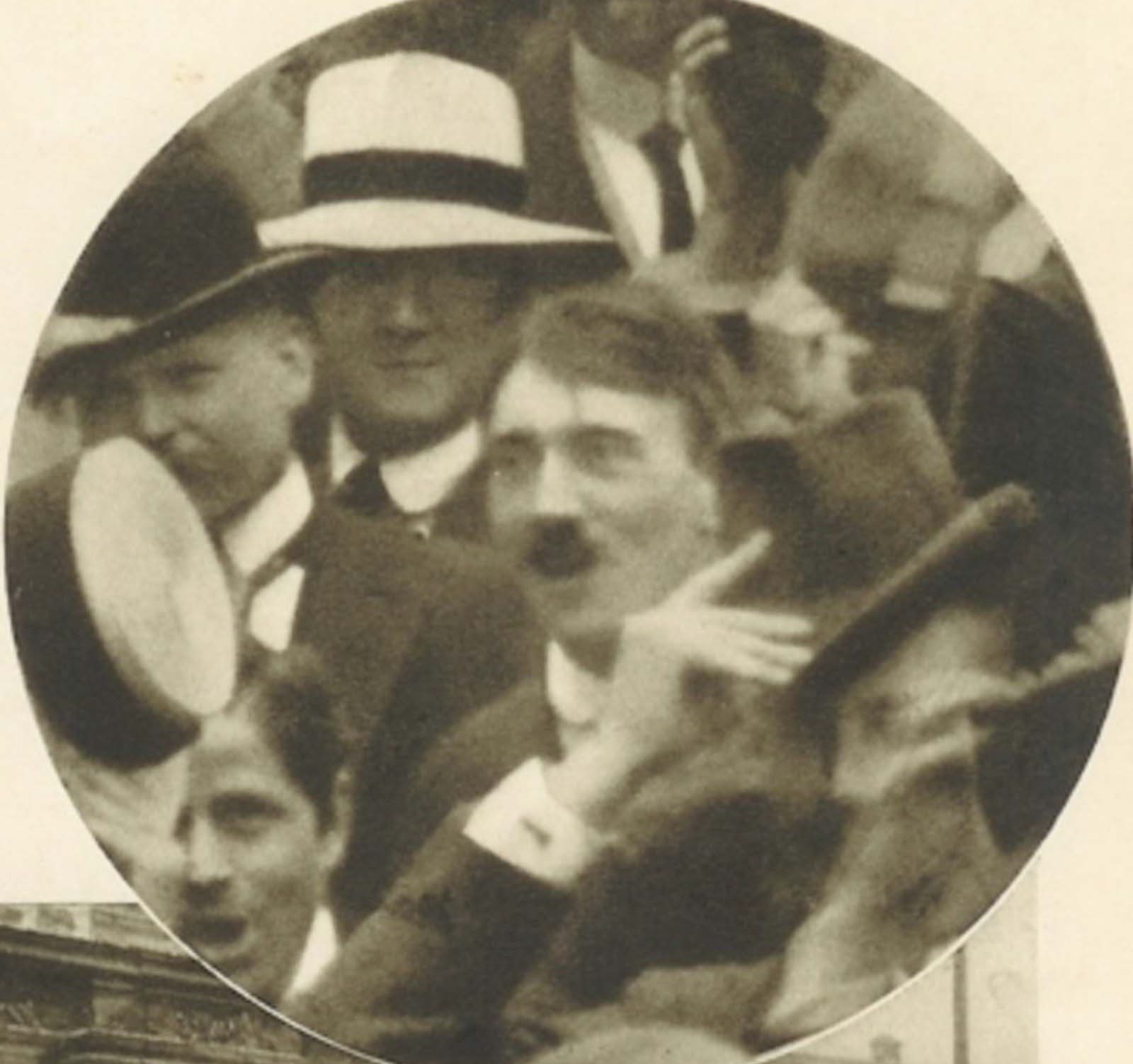
Hitler at OdeonPlatz in Munich, August 1914
Hitler Before the WW1
It’s safe to say that Adolf Hitler was a mediocre personality before WWI. His parents were typical representatives of the middle class in the Austrian Empire. Young Adolf didn’t use a chance to start any decent career in pre-war Austria and relocated to Germany. Hitler positioned himself as an intellectual Austrian Empire’s German elite but never found any way how to make money with this mindset. Historians claim that Adolf selected that military career will fit him best. And the main reason why Hitler preferred the German army service to Austrian was a reluctance to serve alongside Czechs, Croats, and Jews, whom he disliked.
Fake photo start
This photo appeared in various samples of german propaganda during the 1930s. It showed how close Adolf Hitler was with ordinary people before WW1. Munich photographer Heinrich Hoffmann took this photo at a demonstration in support of the war against Russia in Munich’s Odeonsplatz on August 2, 1914. Nevertheless, various historians doubt that it was a real photo with Adolf Hitler. They state that Hoffmann handled the image to highlight the soon-to-be-dictator. While the original negative of this picture was lost, it’s hard to prove if it was real. Other photos of that period show Hitler with a more massive mustache. The fashion of shaping facial hair down to a “toothbrush” is linked to the wearing of gas masks. Tiny mustache allowed to wear gas protection more comfortably; Taking to account the history of gas masks usage, we may conclude that it was unlikely that Adolf Hitler could have a tiny mustache in 1914.
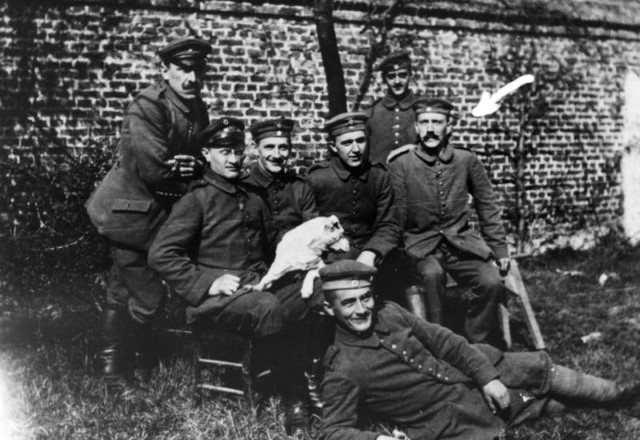
Hitler is seated on the far right of the group of WW1 comrades.
Like a local Bavarian
Hitler had avoided the Austrian enlist for nationality reasons mentioned above. At the same time, he didn’t miss a chance to join the Bavarian army. Thus we cannot accuse Hitler of acting cowardly.
By the way, while being a part of Germany, Bavaria secured its independent army. The Austrian-born Adolf Hitler requested the right to join that army. On August 16, 1914, he entered the barracks of the 16th Bavarian Reserve Regiment.
The Massacre of the Innocents
It didn’t take to long for Hitler to get into the real WW1 massacre. During the first couple of months, he participated in the most horrible battles the German troops encountered.
In October 1914, German and British divisions expanded the front line, as they rushed to close the gap between their positions and the sea. Reserve armies, including the 16th Bavarian Reserve, relocated to Ypres.
In late October, those units assaulted the exhausted but experienced veterans of the British Expeditionary Division. The fresh German recruits experienced a terrible defeat. The 16th engaged in an encounter with 3,600 men. Only 611 unwounded survivors left in just five days. In two weeks, Hitler’s platoon of 250 soldiers was down to 42.
The losses were devastating. Those young men who survived called this battle the Massacre of the Innocents.
But Hitler proved himself as a brave soldier. He got a promotion to lance-corporal and recommended for the Iron Cross Second Class.
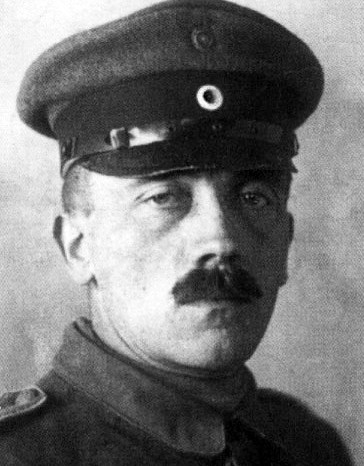
Hitler, 1914
Military and Social Promotion
While serving in Bavarian Reserve, Hitler felt happy for the first time in his life. It was a perfect chance for social progression.
Hitler obtained a decent amount of medals and honor during the rest of WW1.
There’s no surprise that every german who served with Hitler told about his bravery. Please note, that many of that memoir dated earlier than Adolf Hitler took power in Germany. His former officers remembered him as a “reckless attacker” and “honorable nature.” Well, WW1 discovered the best sides of Hitler.
Hitler served as a runner, communicating messages back and forth between the trenches and commanders. His political opponents used this fact to undermine his reputation. They said he had not faced the risks of the front line, and he wasn’t in the trench during french raids. In fact, they were wrong.
Messengers did not participate in the bloody trench onslaughts. But they didn’t take a rest a stay safe at the same time. Artillery bombardments, gunfire, and gas, could finish the runners’ life immediately. For example, three out of the eight messengers in Hitler’s unit were killed and a fourth severely wounded during the first couple of days of real action.
Bapaume wound
Hitler was wounded several times during WW1. The battle near Bapaume in 1916 caused the most severe damage to his health. The fragment of shell immobilized his leg, and Adolf had stayed behind. He couldn’t leave the battlefield without assistance on that day. The wound was so bad that recuperation took long five months.
Hitler spent all WW1 time on the West Front, from October 1914 to October 1918. They’re not so many combatants with greater war hours count. But Hitler liked his WW1 experience. He spoke about it as it was the greatest of all adventures. Being part of something greater, serving with personalities he admired, it was a powerful life action for a young man.
Hitler never thought that WWI was a historical tragedy of humanity. It was a heroic battle that he participated in with comrades, and essential in a way his civilian life had never been.
The End of the War
Hitler spent several months on the quiet lines near Alsace. The rest of the war he served near Ypres. It was the snowiest, swampiest, most violently contested area of the front.
Heavy shelling, non-stop machine gun fire, and trench attacks became a daily routine. Hitler’s division encountered in the battles of Ypres, the Somme, and Arras – fights recognized with horror for their cold desolation and terrible losses.
On October 13, Hitler was in the Avangard trenches when the British started a gas attack. The gas flowed unnoticed into his burrow overnight. At dawn, he traveled toward the corps base with a note. The gas blinded Hitler, and he denied any try to hospitalize him.
An honor for courage
Hitler’s war experience was remarkable. In four years of service, he took part in twelve battles and twenty-five other stints of trench duty.
The war developed military Hitler. The worst horrors of war were somehow linked with the best days of his life.
Сообщение Adolf Hitler during WW1: historical facts and pictures появились сначала на Old Pictures.
]]>Сообщение Serbia in WW1: photos and facts появились сначала на Old Pictures.
]]>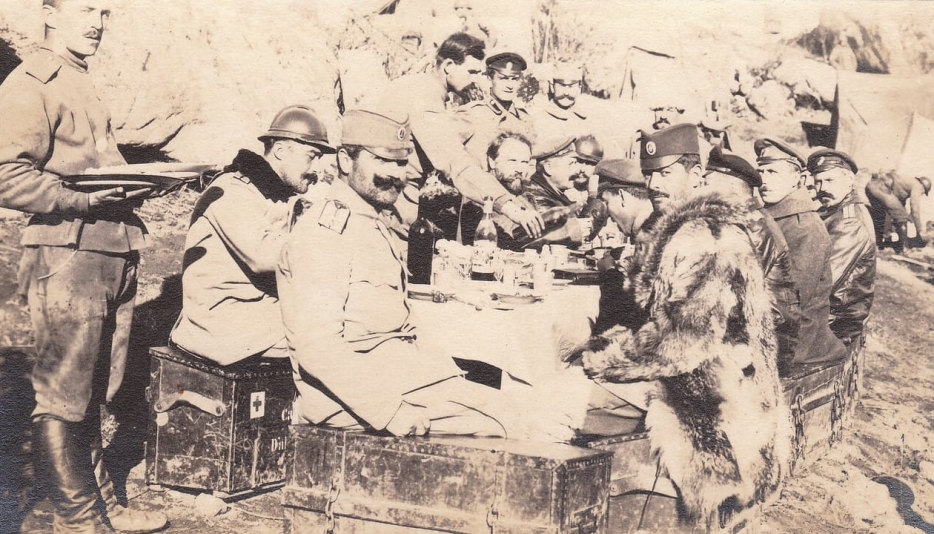
Serbian and Russian officers are having breakfast on the front, 1916.
WW1 is a significant chapter in the History of Serbia. This young Slavic state was in the middle of historical events from the first days of the war. WW1 started when the Austro-Hungarian Empire declared war on Serbia. It happened right after 19-year old Serbin Gavrila Princip triggered the action: assassinated Franz Ferdinand, the prince of Austria. The young revolutionary couldn’t even imagine what kind of historical tornado he called in his home country. Serbia desperately fought till the last day of WW1, losing at least a quarter of its population dead or lost.
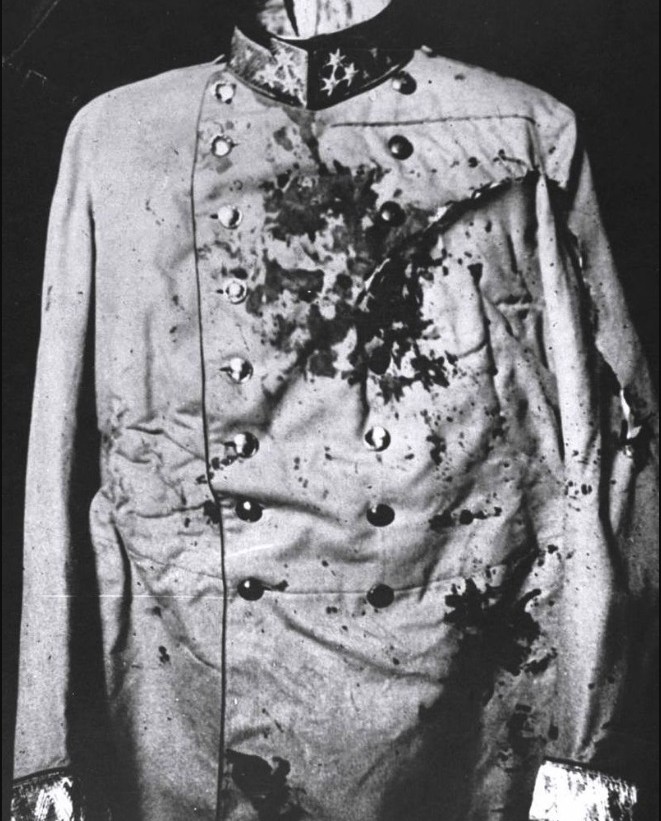
The uniform of Archduke Franz Ferdinand from 1914, whose assassination triggered the outbreak of World War I
Long way to independence
Serbia covered a long way to its independence from the Osman Empire. Serbians initiated three uprisings against the Muslim rulers at the begging of the 19th century. As a result, the sultan recognized Milos Obrenoviche as a ruler of Serbia in 1815. But the formal independence came in 1878, after the war between Russia and the Osman Empire.
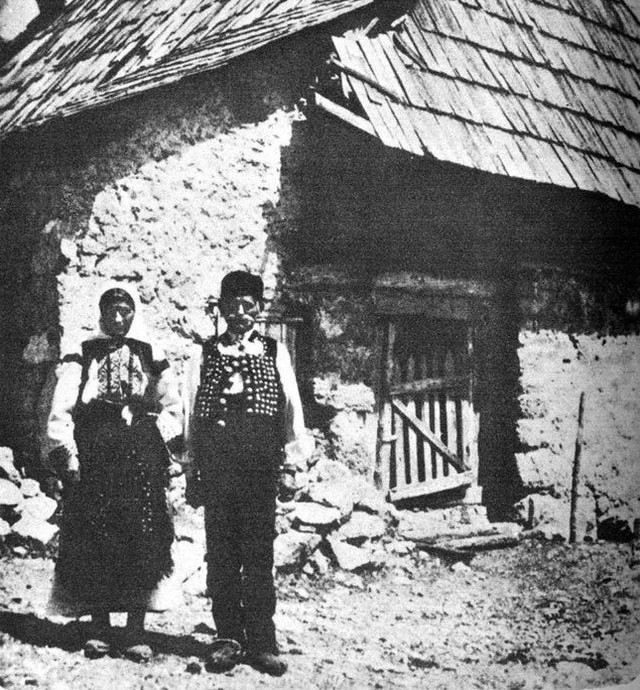
Gavrilo Princip’s parents in front of their house, the early 1900s
Serbia was independent, but not satisfied by the beginning of WW1.
While gaining independence, a lot of Serbians dreamed of uniting all of the south Slavic people under the rule of Belgrade. Some of those Slavic territories were a part of the Austro-Hungarian Empire. Vien set the region on fire, supporting numerous conflicts between Slavic states of Balkan region during so-called Balkan wars of 1912-1913

King Peter I of Serbia (center right) in conversation with his Prime Minister, Nikola Pašić (center left), during WWI
How one revolutionary from Serbia could start WW1
There’s a historical fact that WW1 started right after Gavrilo Princip murdered Franz Ferdinand in Sarajevo in 1914. But the truth is that WW1 had to begin in one way or another. Austro-Hungary was preparing for it, Germany was preparing for it… Countries of Antanta did so too. It was a matter of time.
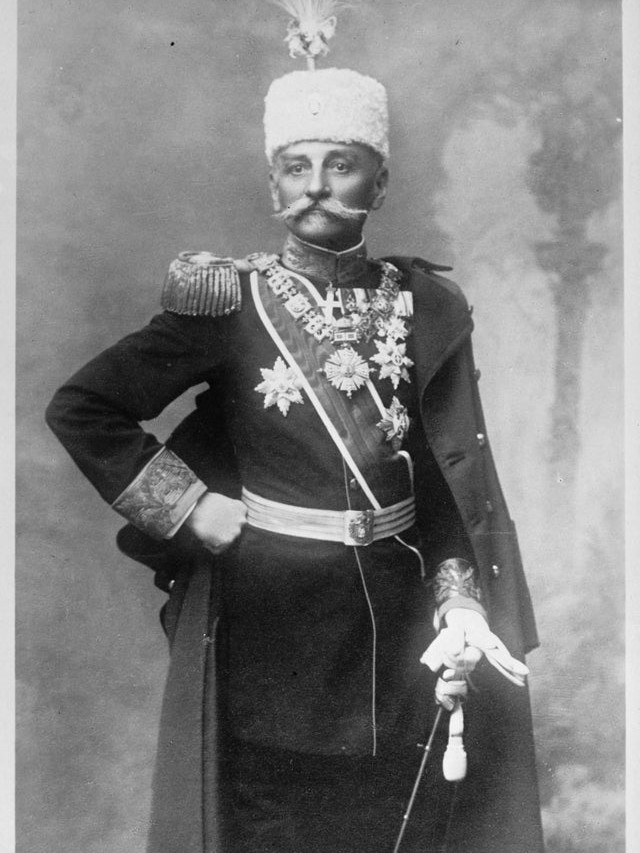
Peter, King of Serbia at the beginning of WW1, 1914
A poor start…
The first weeks of WW1 had brought some mixed success to the army of Serbia. Combat operations in this sector of the front went on with varying success. After winning some battles in August 1914, including the one in the region of the Tser ridge, Serbians couldn’t resist overwhelming Austria. The Austrian troops took the Serbian capital in November 1914, despite the active help from Russian and French soldiers.
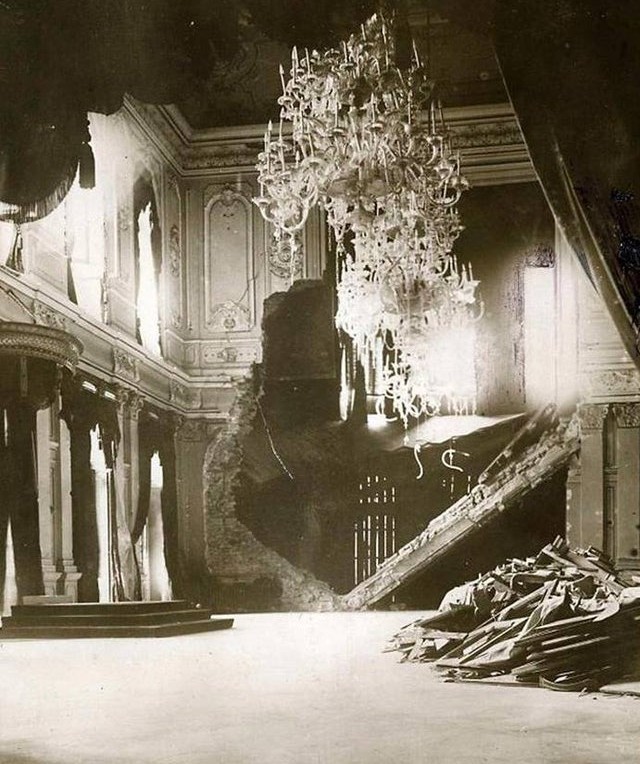
The throne room in the Royal Palace in Belgrade, Kingdom of Serbia, October 1915
A king of Serbia in the trenches of WW1
King Peter joined the army of Serbia in November 1914. He couldn’t act like french trench raiders, but he managed to ignite the inner fire in his troops that suffered poor morale. Peter ordered a new offensive. Serbian started it on December 3, 1914. During the 12 days of fighting on the river Kolubare and river Drina, they defeated the Austro-Hungarian troops. On December 15, the Serbians took Belgrade back. Not a single Austro-Hungarian soldier remained on Serbian territory; more than 50 thousand prisoners were captured, 126 cannons, 70 machine guns, and many other trophies.
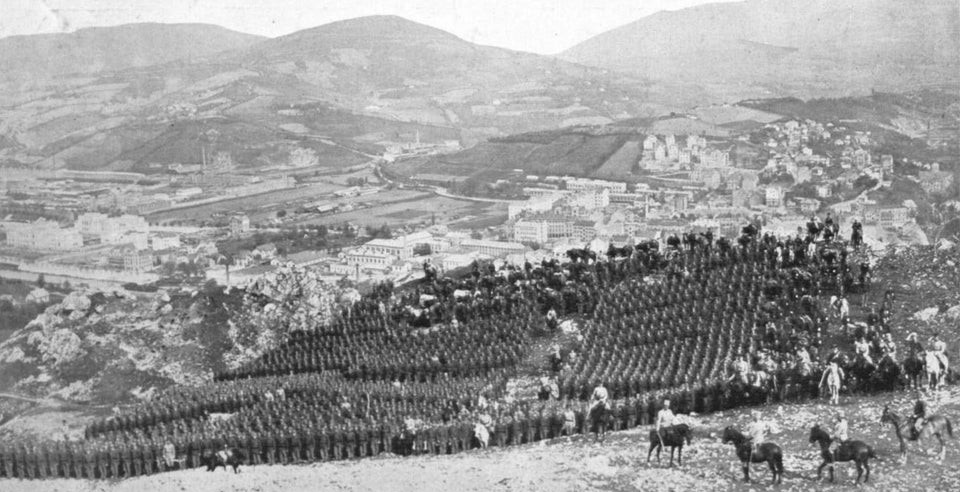
Mobilized Austro-Hungarian troops sent across Sarajevo for Serbia, 1914.
The fails of 1915
Serbia passed through two major historical blows during the battles of WW1 in 1915. It all started when the German forces joined the Austro-Hungarians in October 1915. Austro-Hungarian and German troops suppressed the fierce resistance of Serbians and retook Belgrade on October 9. Serbs retreated to the south.
The second blow came from the Balkanian brothers. On October 14, Bulgaria entered WW1 on the side of Germany. Bulgarians invaded Serbia on the morning of the next day.
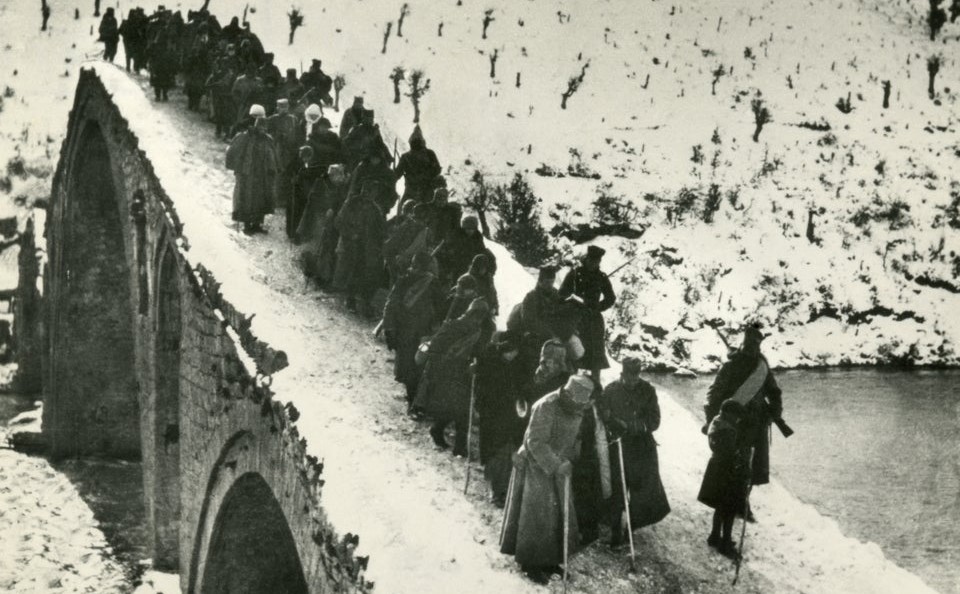
King of Serbia while crossing the Drim river during the retreat of the Serbian Army in December 1915
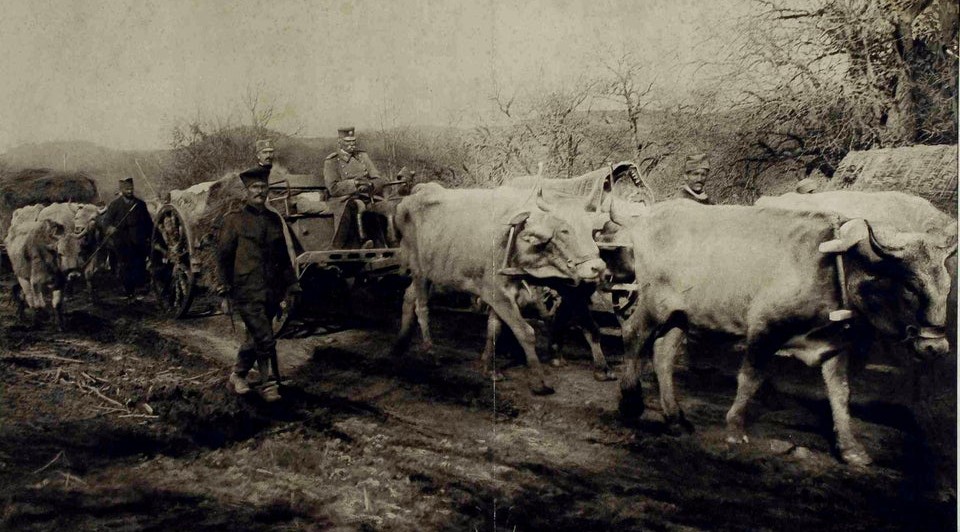
71-year-old Peter I, King of Serbia, retreats across Jankova gorge, November 1915
An Italian retreat
Lost battles forced the French command to transport the Serbian army to Italy, and then to Tunisia. Serbian units restructured there and subsequently returned to the front. This relocation required massive naval support. The helping hand came from France and England.
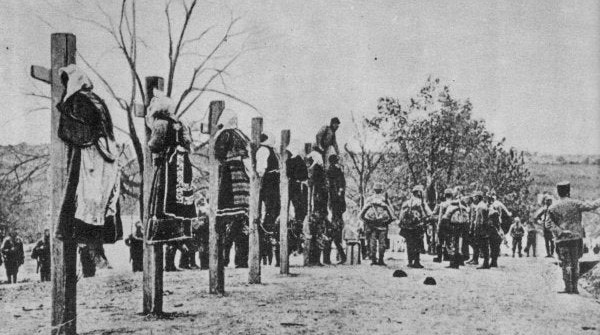
Austro-Hungarian soldiers executing men and women in Serbia, 1916.
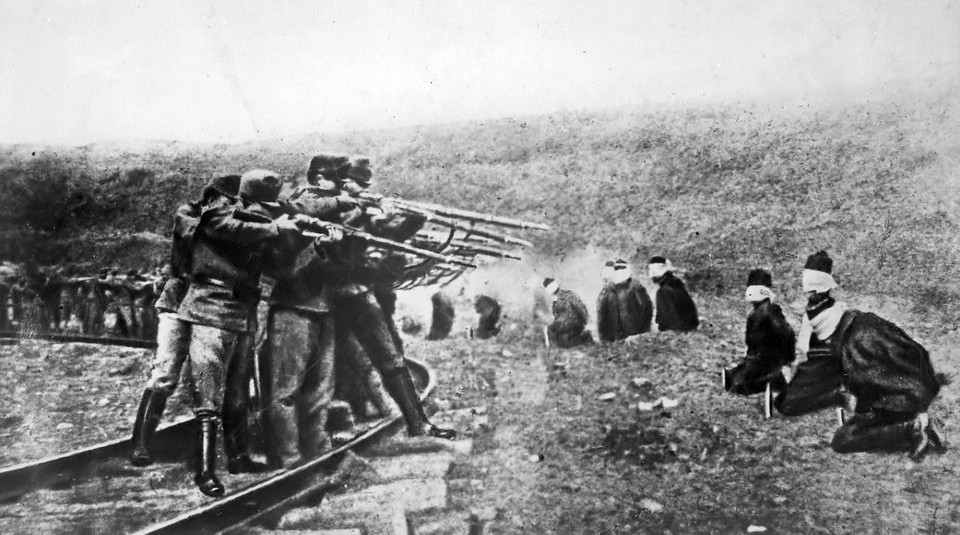
Austro-Hungarian troops executing captured Serbians, 1917
Serbs continue to fight on the Thessaloniki front
Serbs continued resistance in Albania on the so-called Thessaloniki front. France reinforced the Serbians with their divisions in May 1916. In total, the Serbian troops numbered 130,000 people. The allied forces in the Balkans reached 300,000.
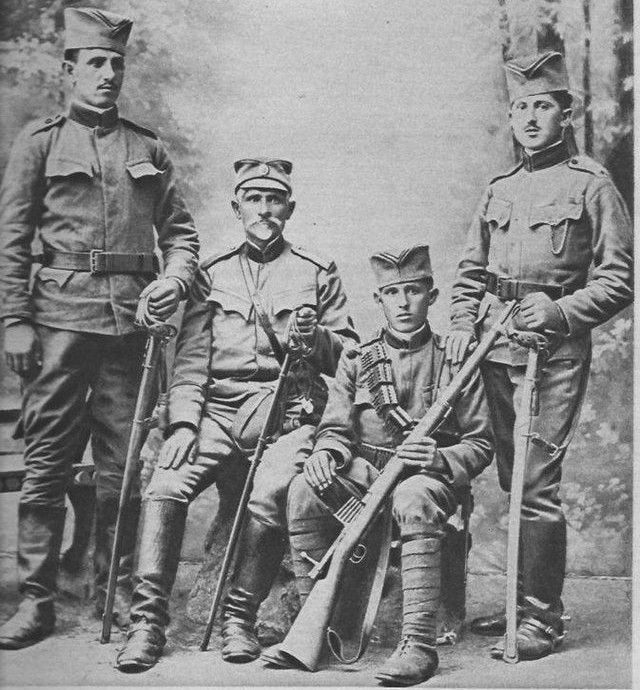
Captain of the Serbian army. A veteran of 7 wars, again on the front with his three sons. WW1 -1915
Long-awaited victory
Antanta troops received significant superiority by the end of the summer of 1918. They initiated a new offensive with extensive usage of gas attacks on the Thessaloniki front. Demoralized Bulgaria could overcome this defeat and capitulate on September 29. Serbian army victoriously entered Belgrade on October 18, 1918. It was a new glorious page in Serbian history – Belgrade became the capital of the Kingdom of Serbs, Croats, and Slovenes (since 1929 – Yugoslavia).
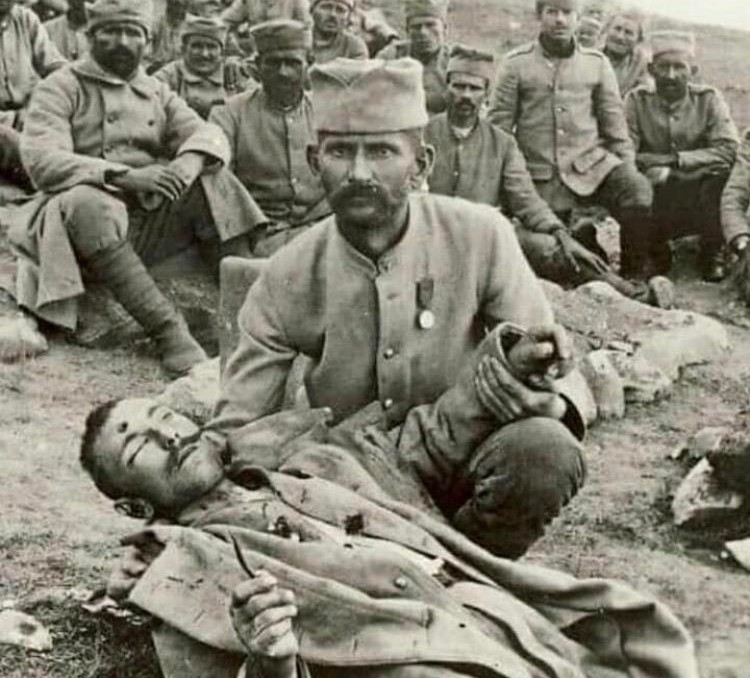
Serbian soldier holding his dead brother. Battle of Kaymakchalan, Serbia 12.09.1916 WWI
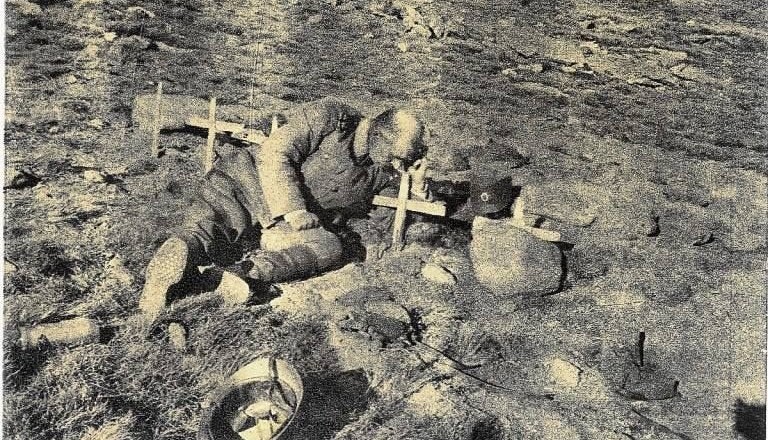
Serbian soldier on his only son’s grave (also a soldier), WW1. Serbia lost 25% of the population (1 million killed_died), including 60% of the adult male population in a war.

Soldiers of the 1st Bulgarian Army salute a column of German soldiers passing through Paraćin, Serbia, in November 1915.

Muslims of the Serbian Army Laying Oath before the Mufti of Niš (Niš, Serbia, 1915)
Сообщение Serbia in WW1: photos and facts появились сначала на Old Pictures.
]]>Сообщение The political career of Theodore Roosevelt in pictures появились сначала на Old Pictures.
]]>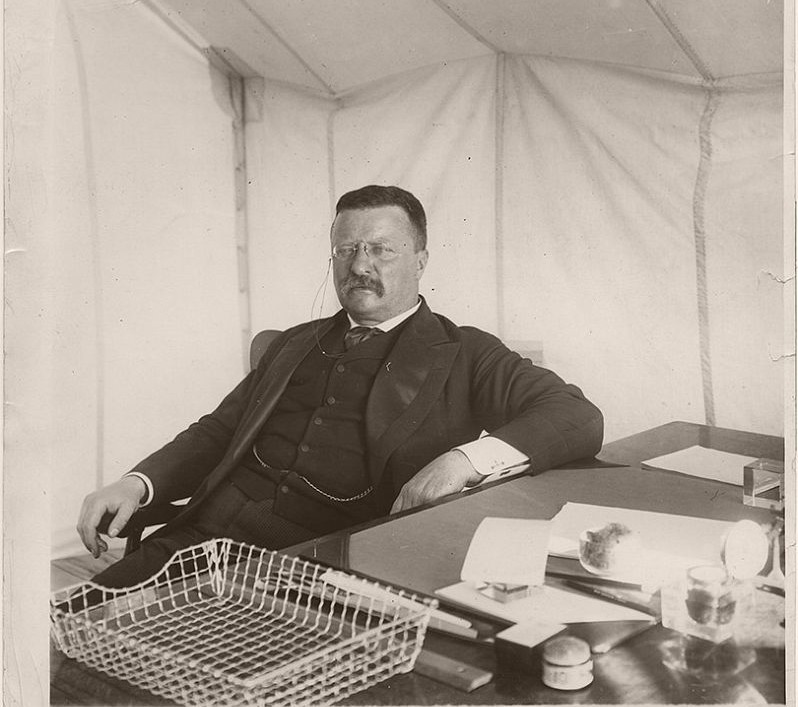
Historical pictures of President Theodore Roosevelt: taking a rest after delivering his speech at the Alamo in San Antonio, Texas.
Many of these pictures still keep energetic of the presidency of Theodore Roosevelt, one of the most popular leaders of the US. Upon election, he was the youngest President of the US, and he did his best to make his country great. New York-born Roosevelt became the first historical symbol of the US global power, just like the Statue of Liberty associated with US freedom.
An excellent political start of Theodore Roosevelt
Roosevelt started his bright political career in 1880, with his first historical essay, “War at Sea in 1812”. He entered the New York State Legislature committee and then was a chief of the police of New York City. In 1897 Theodore Roosevelt became Deputy Secretary of the Navy. He participated in the war between America and Spain and received a Colonel rank.
Theodore Roosevelt was a governor of New York until the presidential elections of 1900. Theodore Roosevelt was a vice-president of elected President McKinley. However, in September 1901, McKinley was assassinated, and Theodore Roosevelt became the youngest President in US history. There are not so many pictures of Theodore Roosevelt during his pre-president period. But he compensated this gap by hiring the cameraman for his numerous trips and meetings during the presidency.
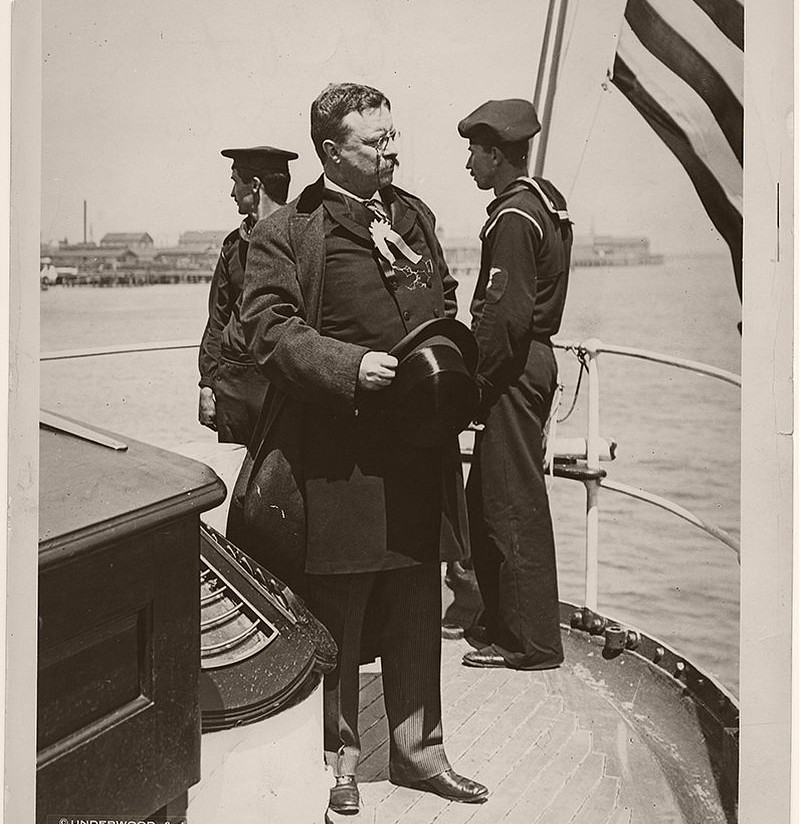
President Theodore Roosevelt Standing on the Stern of the Naval Cutter, USS Algonquin, in Charleston, South Carolina, 1902.
The President of the Globe
Theodore Roosevelt tried to develop the United States as a global imperialist power. His expressions “big stick policy” and “global policeman” were widespread. Roosevelt pioneered racial tolerance when invited African American to the White House for the first time. Also, Theodore Roosevelt founded the Ministry of Trade and Labor, established control over the territory of the Panama Canal.
And of course, we remember that Theodore Roosevelt was a person behind the National Parks legislation, which preserved unique nature of America.
In the 1904 election campaign, Theodore Roosevelt criticized the abundance of monopolies, but also struck deals sponsoring the Republican Party with tycoon’s money. Roosevelt refused the third presidential term and nominated William Taft instead.
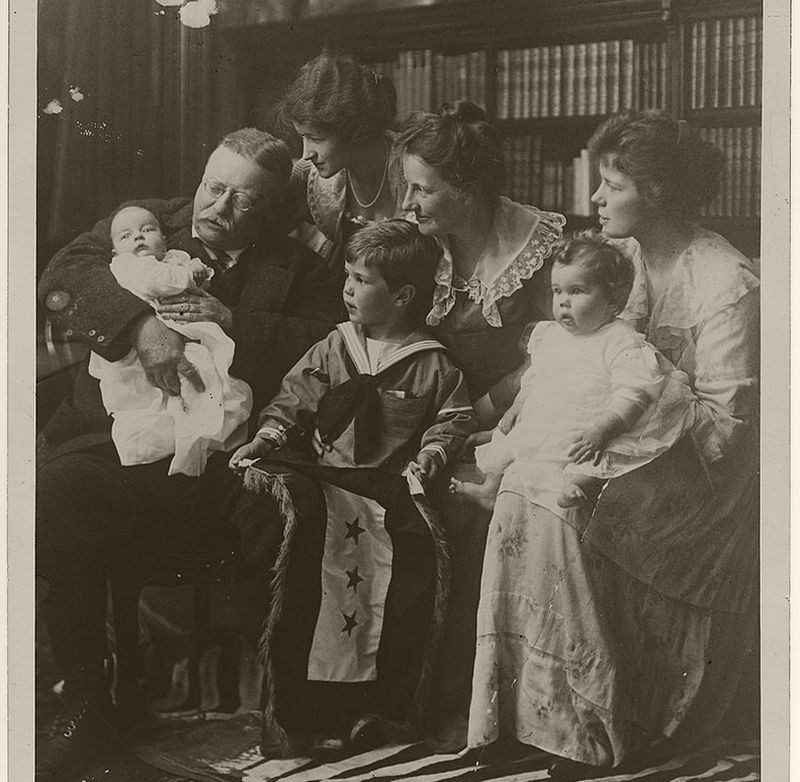
Seated, left to right, are Archibald Bulloch Roosevelt, Jr., Theodore Roosevelt, Grace Stackpole Lockwood Roosevelt, Richard Derby, Jr., Edith Kermit Carow Roosevelt, Edith Roosevelt Derby Williams, and Ethel Carow Roosevelt Derby. Richard Derby Jr. is holding a service flag with three stars. The stars symbolize three of Roosevelt’s sons, Quentin, Archie, and Theodore Jr., who served the United States in battle.
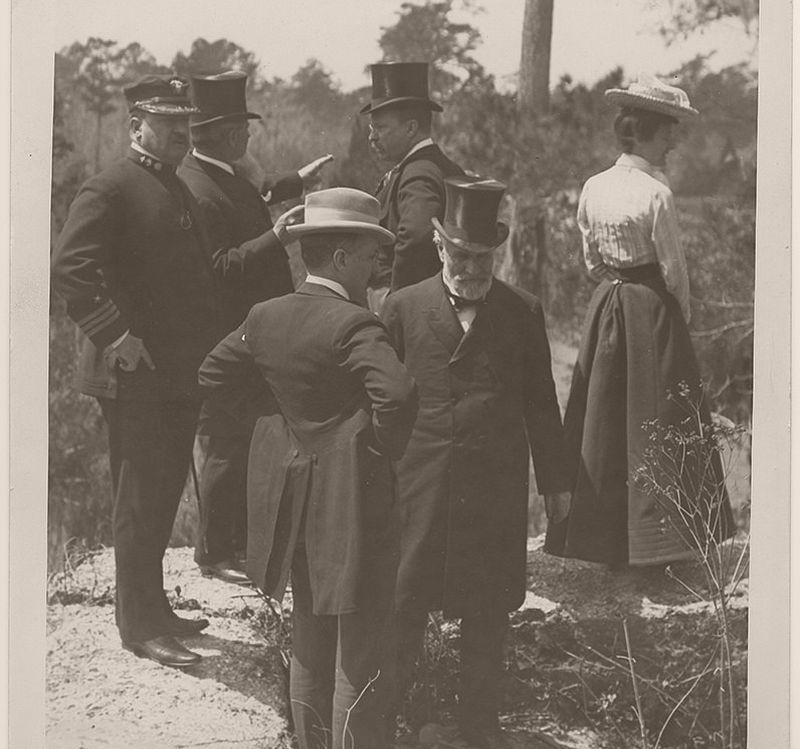
Theodore Roosevelt and other members of the presidential Republican party, at the remains of Fort Dorchester, a fort built in 1757 for munitions storehouse. The personages in the foreground, left to right, are George B. Cortelyou, Presidential Cabinet Secretary, and James Wilson, Secretary of Agriculture. In the background, left to right, are an unidentified Navy lieutenant, an unknown man, President Theodore Roosevelt, and Edith Carow Roosevelt. Old Dorchester, Dorchester County, South Carolina. April 9, 1902.
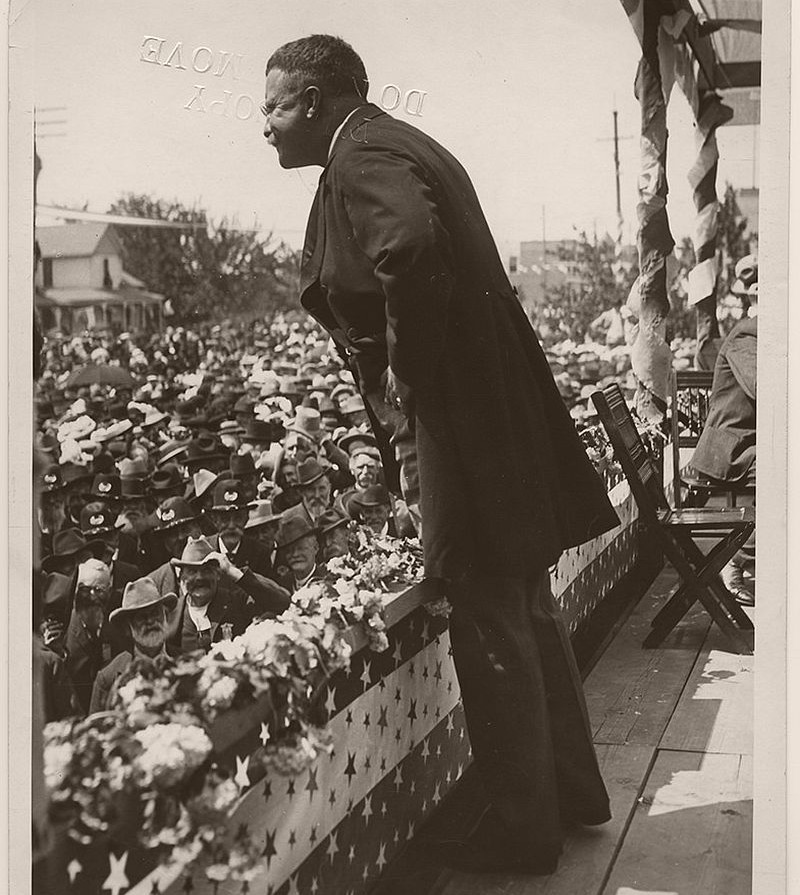
President Theodore Roosevelt is speaking in North Yakima, Washington. May 25, 1903.
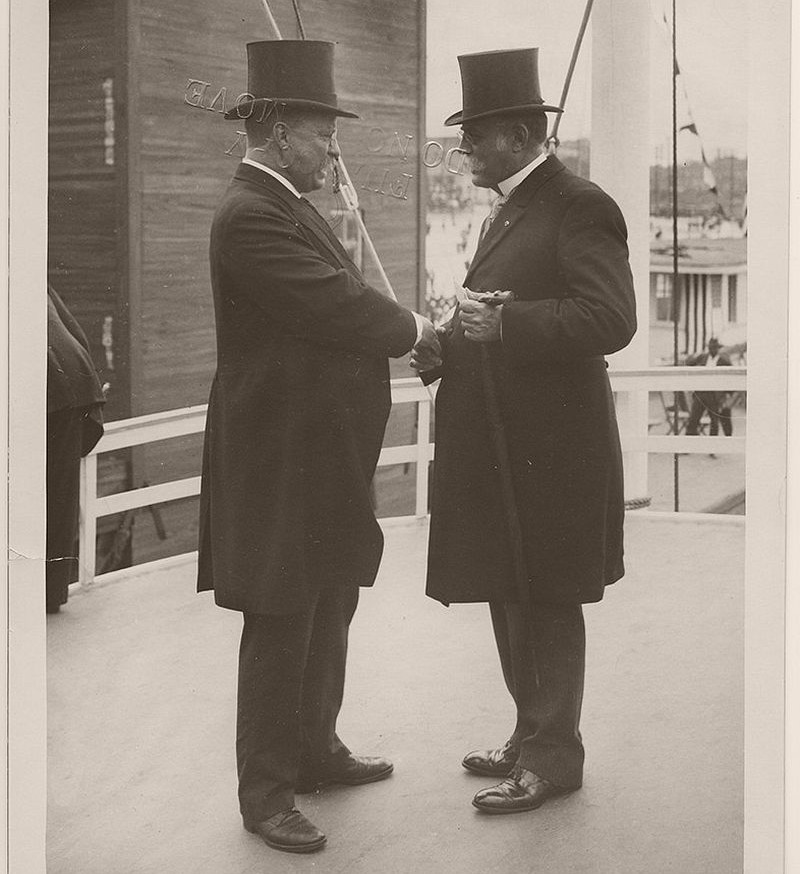
President Theodore Roosevelt is shaking hands with Clinton B. Sears, President of the Mississippi River Commission, on the steamboat the USS Mississippi. October 4, 1907.
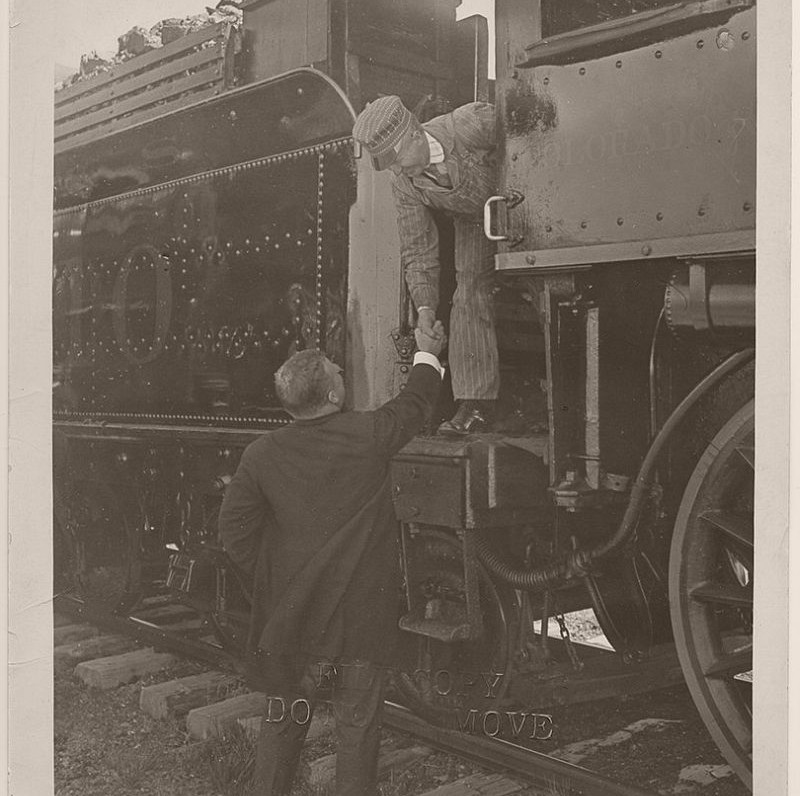
President Theodore Roosevelt is shaking hands with a locomotive engineer for the Colorado and Southern Railway. Vernon, Wilbarger County, Texas. April 1905.
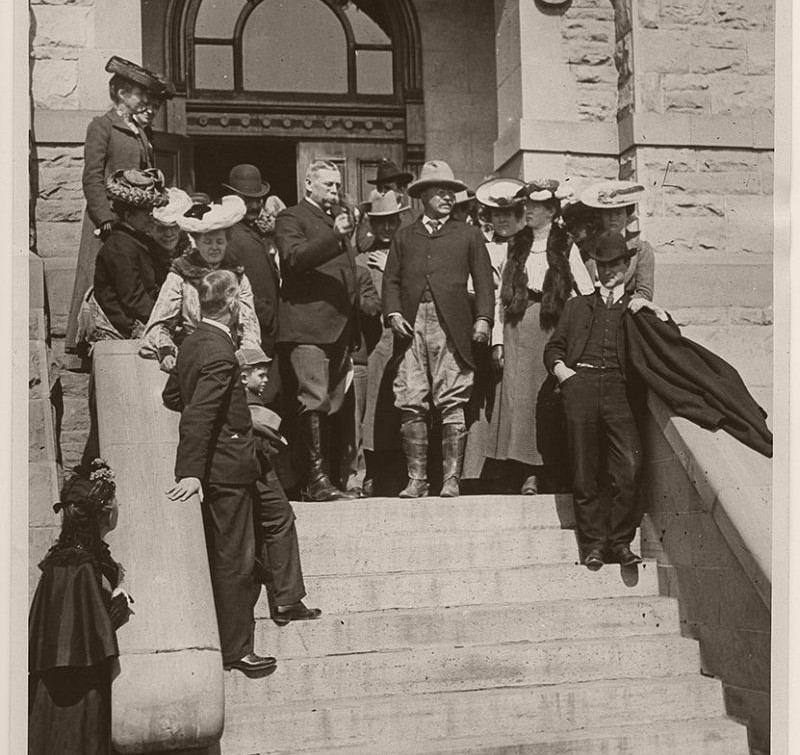
President Theodore Roosevelt received a pair of spurs from Francis Warren.
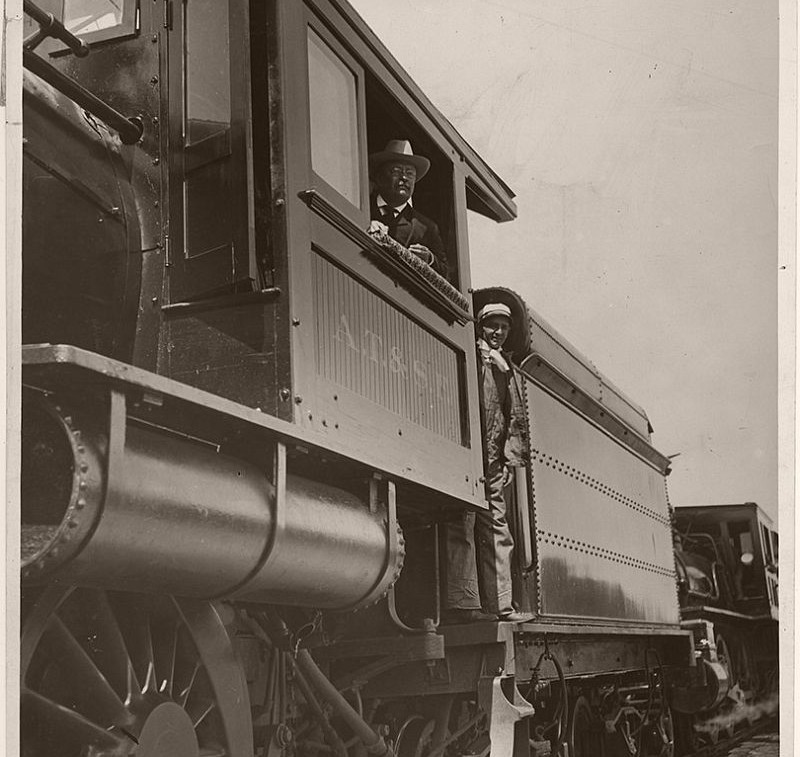
President Theodore Roosevelt is posing in the cab of his locomotive, while campaigning for re-election, ca. May 1903
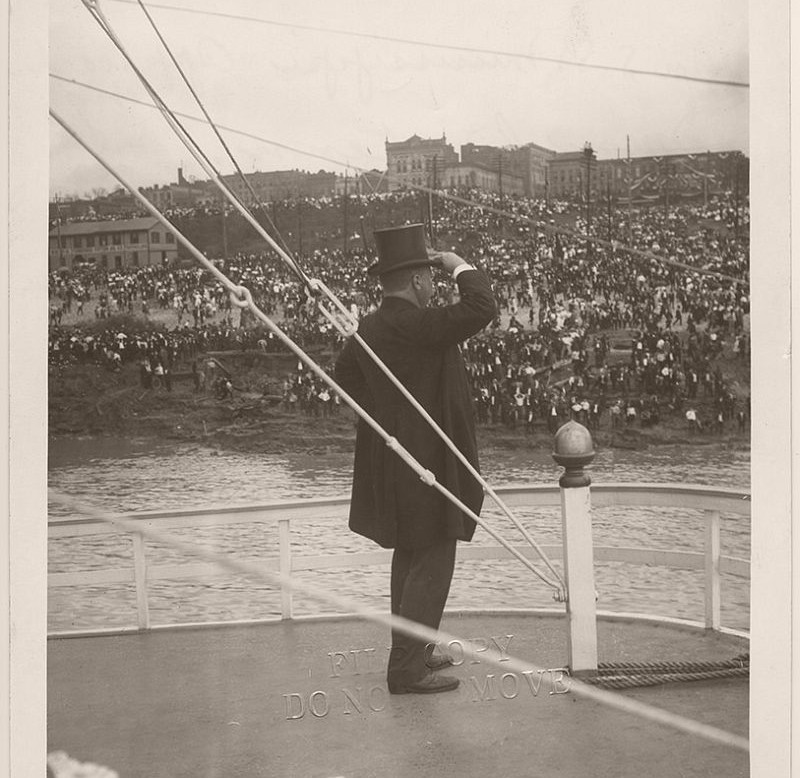
President Theodore Roosevelt on the deck of the USS Mississippi, approaching Memphis, Tennessee. On October 4, 1907, President Theodore Roosevelt made a speech in Memphis on the development of the waterways.
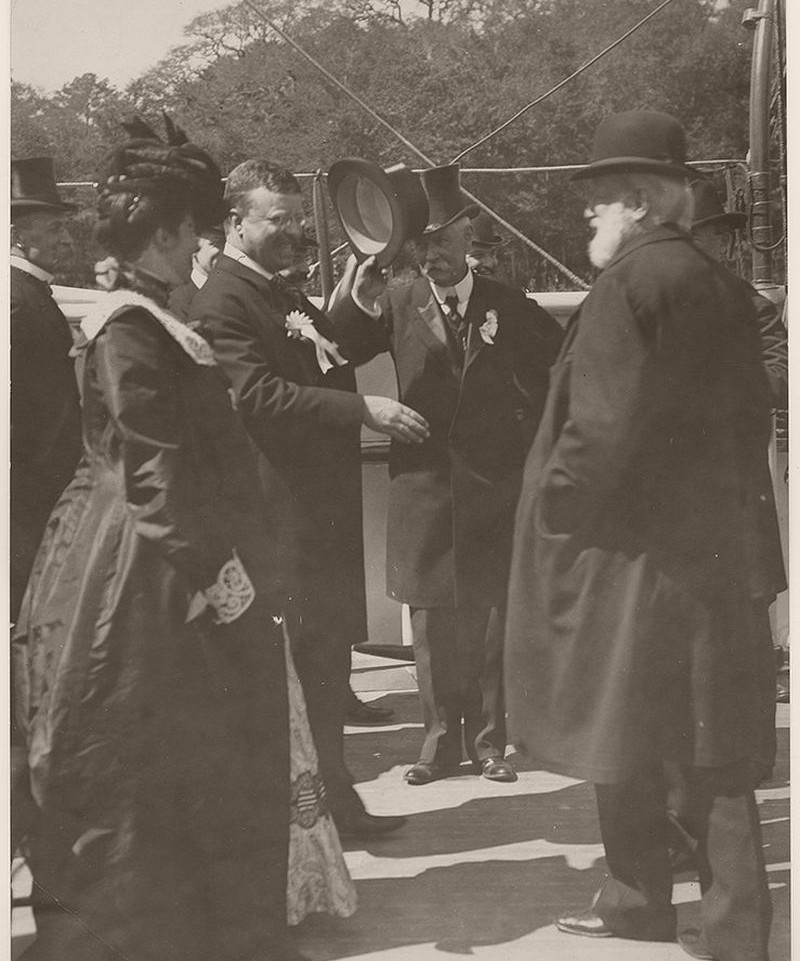
President Theodore Roosevelt Greeting Dignitaries on the USS Algonquin, Charleston, South Carolina. April 8, 1902.
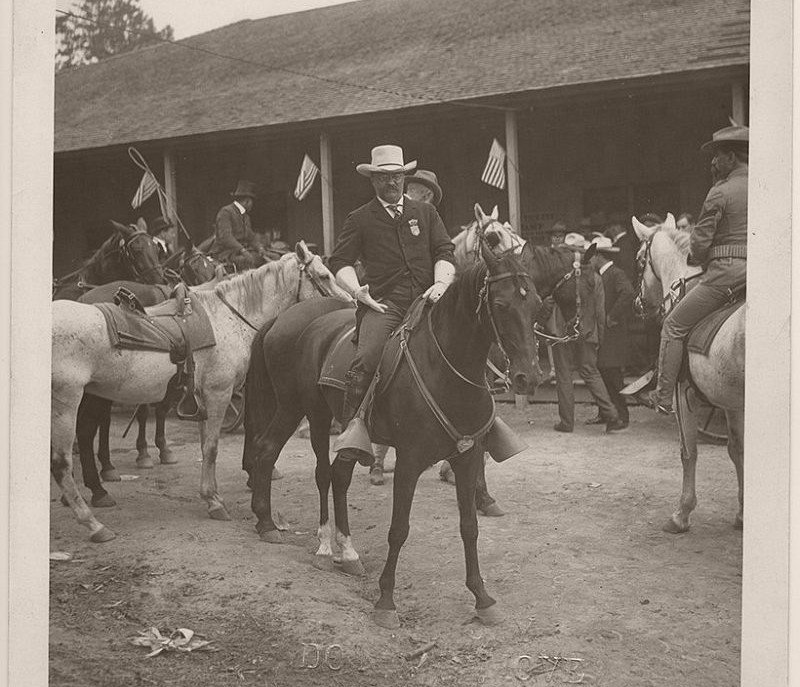
President Roosevelt on horseback, preparing to survey the battlefield on which the Battle of Chickamauga took place. Chickamauga, Walker County, Georgia. November 13, 1902.
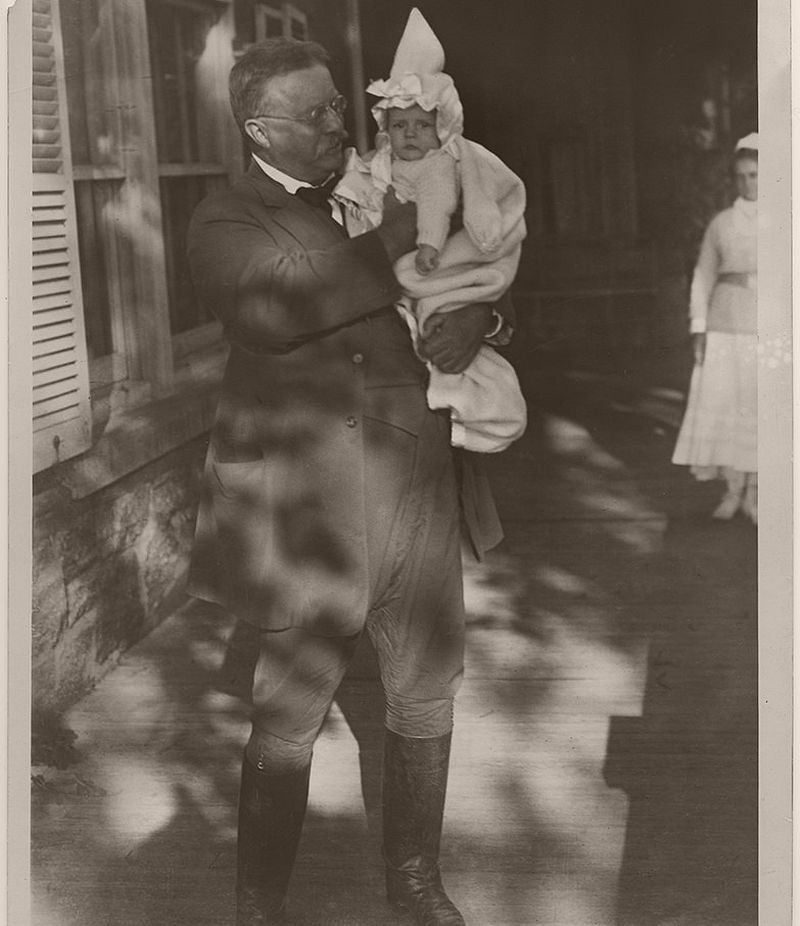
President Roosevelt holds one of his grandchildren on his porch. Oyster Bay, Nassau County, New York, ca. 1917
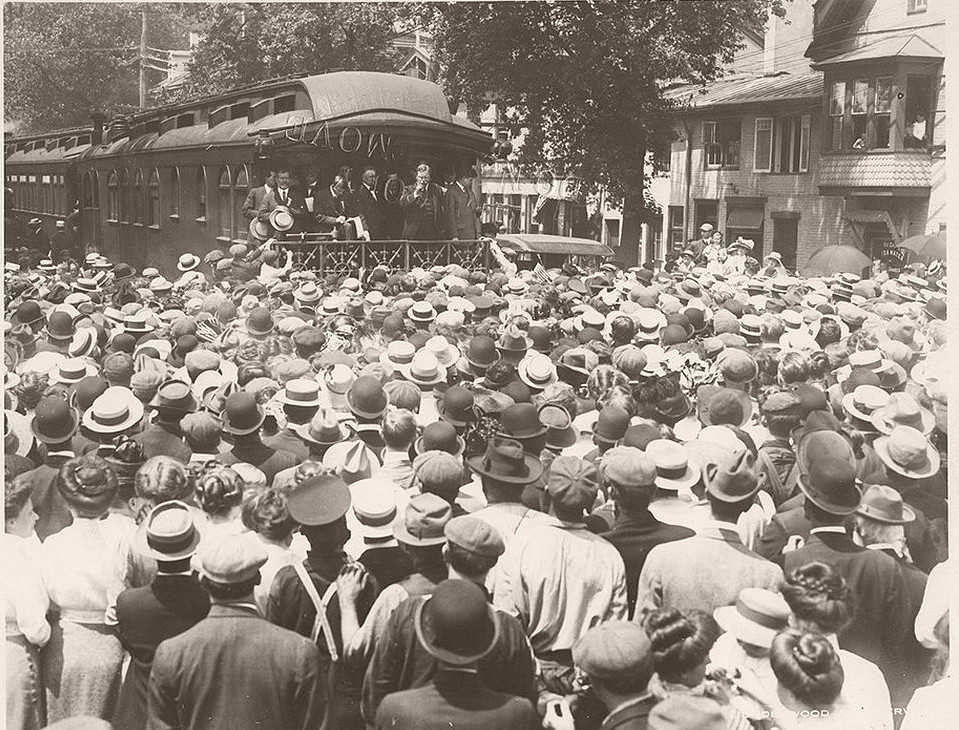
Former President Theodore Roosevelt is delivering a speech from a train, Burlington, New Jersey. April 24, 1912.
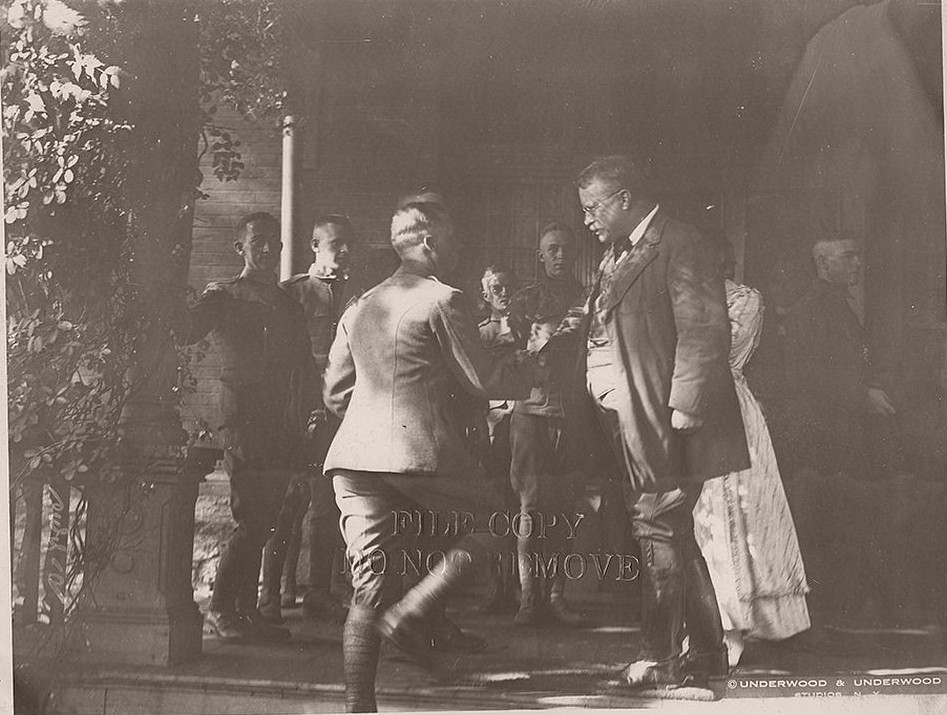
Colonel Theodore Roosevelt is greeting soldiers soon deploying to France at Sagamore Hill, ca. 1917-1918.
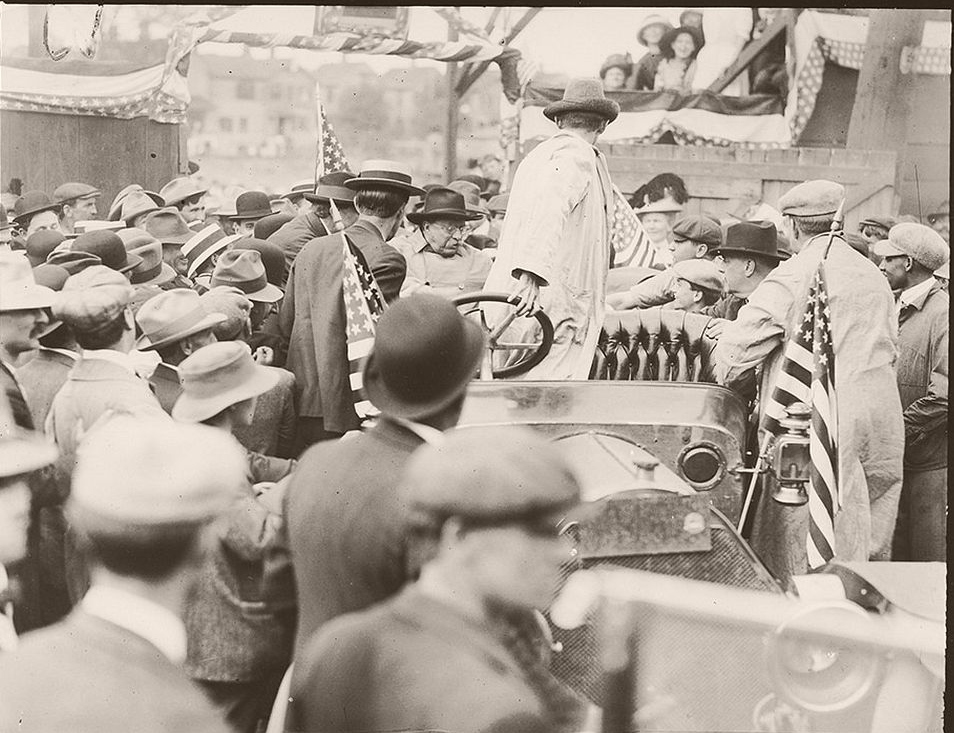
Colonel Roosevelt is speaking at Bound Brook, New Jersey. April 25, 1912.
Сообщение The political career of Theodore Roosevelt in pictures появились сначала на Old Pictures.
]]>